Amy Sherald and Michelle Obama

I don’t think I’ve ever seen this photo before, of artist Amy Sherald and former First Lady Michelle Obama sharing a hug during a session for Sherald’s iconic portrait of Obama. What a different time that was, huh?



This site is made possible by member support. 💞
Big thanks to Arcustech for hosting the site and offering amazing tech support.
When you buy through links on kottke.org, I may earn an affiliate commission. Thanks for supporting the site!
kottke.org. home of fine hypertext products since 1998.

I don’t think I’ve ever seen this photo before, of artist Amy Sherald and former First Lady Michelle Obama sharing a hug during a session for Sherald’s iconic portrait of Obama. What a different time that was, huh?

The Public Domain Review (a true gem of the web) has launched The Public Domain Image Archive, “a curated collection of more than 10,000 out-of-copyright historical images, free for all to explore and reuse”.
While The Public Domain Review primarily takes the form of an “arts journal”, it has also quietly served as a digital art gallery, albeit one fractured across essays and collections posts. The PDIA sets out to emphasise this visual nature of the PDR, freeing these images from their textual homes and placing them front and center for easier discovery, comparison, and appreciation. Our aim is to offer a platform that will serve both as a practical resource and a place to simply wander — an ever-growing portal to discover more than 2000 years of visual culture.
The “infinite view” is particularly fun…you can just pan & scroll and let the whole collection wash over your visual cortex. (via colossal)
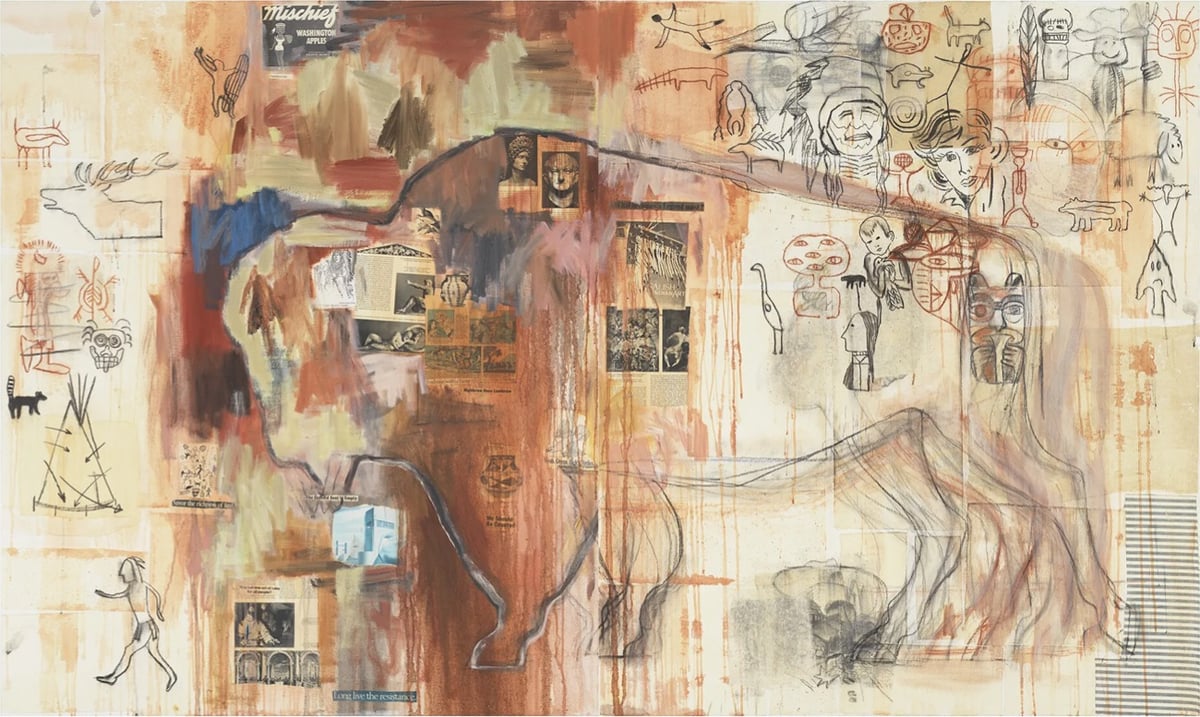
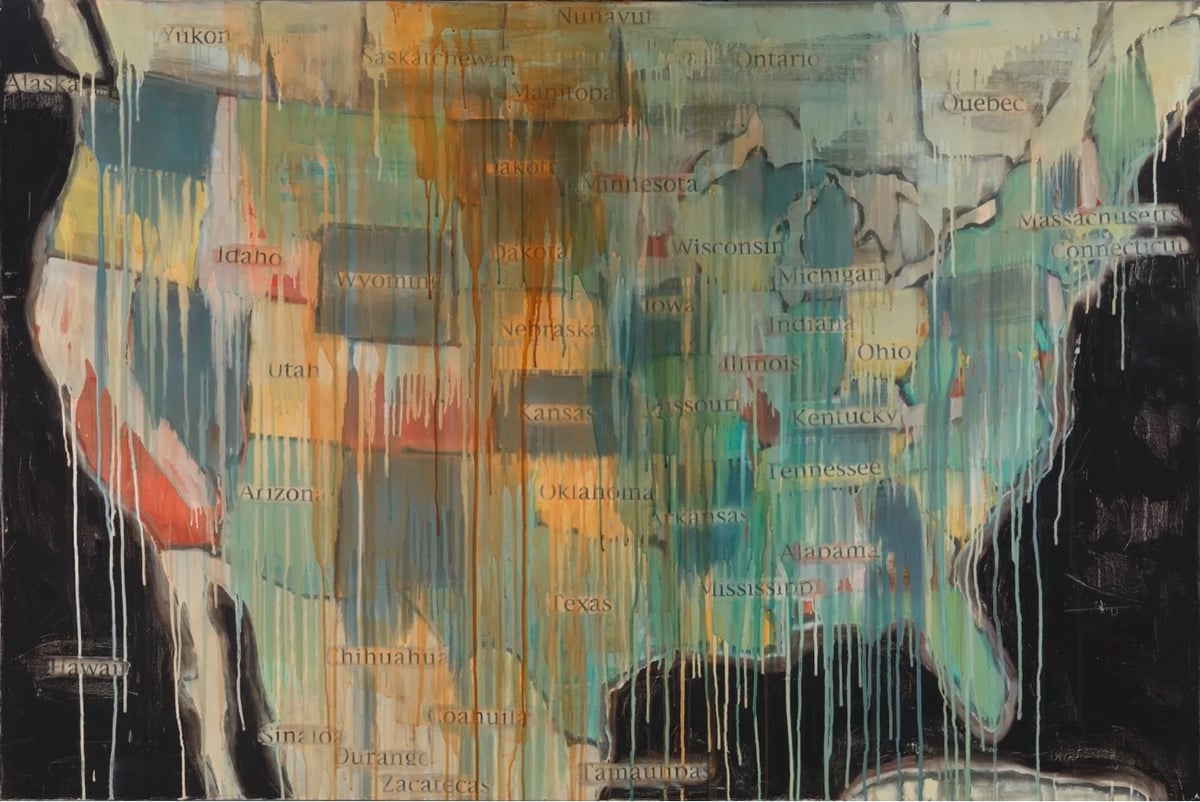
Artist and curator Jaune Quick-to-See Smith has died at the age of 85. From Hyperallergic’s obituary:
As part of a generation of Indigenous artists who tirelessly worked to “break the ‘buckskin ceiling’” in the art world, Smith (an enrolled Salish member of the Confederated Salish and Kootenai Nation) is known for a prolific arts practice that merged piercing humor and profound socio-political commentary with poetic depictions of Native American life. Her five-decade oeuvre, which spans painting, collage, drawing, print, and sculpture, is an intimate visual lexicon that bridges personal memories and joyful resilience, exemplifying her lifelong refusal to be defined by any singular narrative.
More obits: ARTnews, Artnet, The Art Newspaper.
Her art seems to me to be in conversation with Robert Rauschenberg, Jasper Johns, Jean-Michel Basquiat, and countless Native artists & European cave painters from millenia ago — as well as Leonardo da Vinci it seems…that marvelous painting above featuring the buffalo is called “Indian Drawing Lesson (after Leonardo)”.
You can see more of Smith’s work on her website, at The Whitney, at the Garth Greenan Gallery, the Missoula Art Museum, and at the Smithsonian.
80 years ago today, the Nazi death camp at Auschwitz-Birkenau was liberated. An estimated 1.1 million people (Jews, Poles, Russian POWs, Roma) were murdered at Auschwitz-Birkenau between 1940 and 1945, and this date was subsequently chosen by the United Nations as International Holocaust Remembrance Day.
One of the things you can do to mark the day is to join Yad Vashem’s IRemember Wall:
The IRemember Wall is a unique and meaningful opportunity for you to participate in an online commemorative activity marking International Holocaust Remembrance Day.
By joining our IRemember Wall, your name will be randomly matched to the name of a Holocaust victim from our Central Database of Shoah Victims’ Names, and will appear together on the Wall.
You can also choose a specific name to remember and match with on the Wall from our Central Database of Shoah Victims’ Names, which contains over 4.8 million names of Holocaust victims.
As he does every year, illustrator Christoph Niemann drew the person he matched with and shared the story of her life.
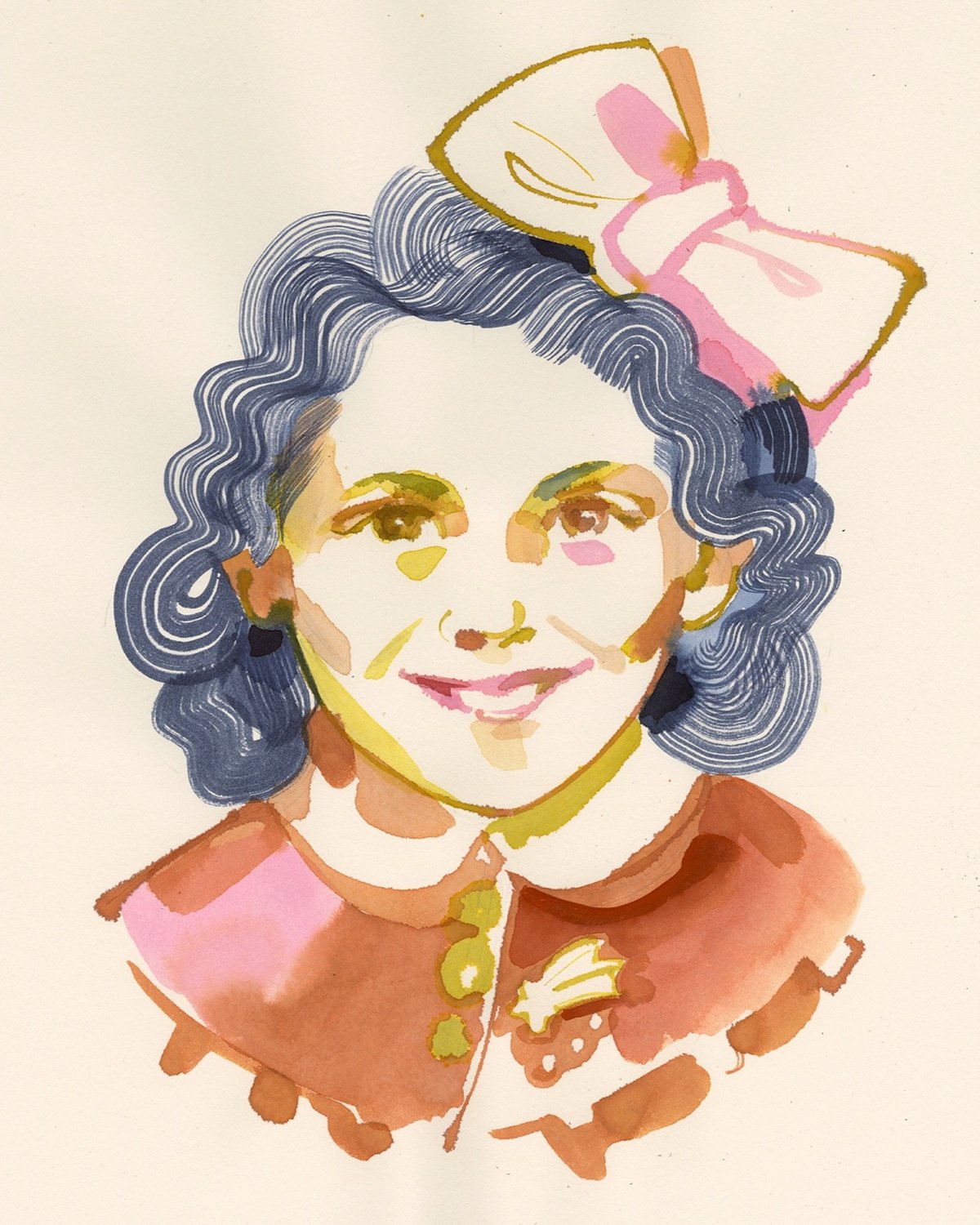
This year I was paired with Astro Cofino. We have very little biographical information: she was born in 1930 in Athens, her parents were called Benoua and Mairy. The first thing that caught my eye when I saw Astro’s photo was a little brooch she’s wearing: it looks like a comet, and I can’t help but thinking that it was meant as a reference to her name? Astro is maybe 11 or 12 in the picture, she smiles, with a tiny hint of giddiness in her eyes.
Here’s Astro’s information from Yad Vashem’s database — she was murdered by the Nazis at Auschwitz when she was 14.

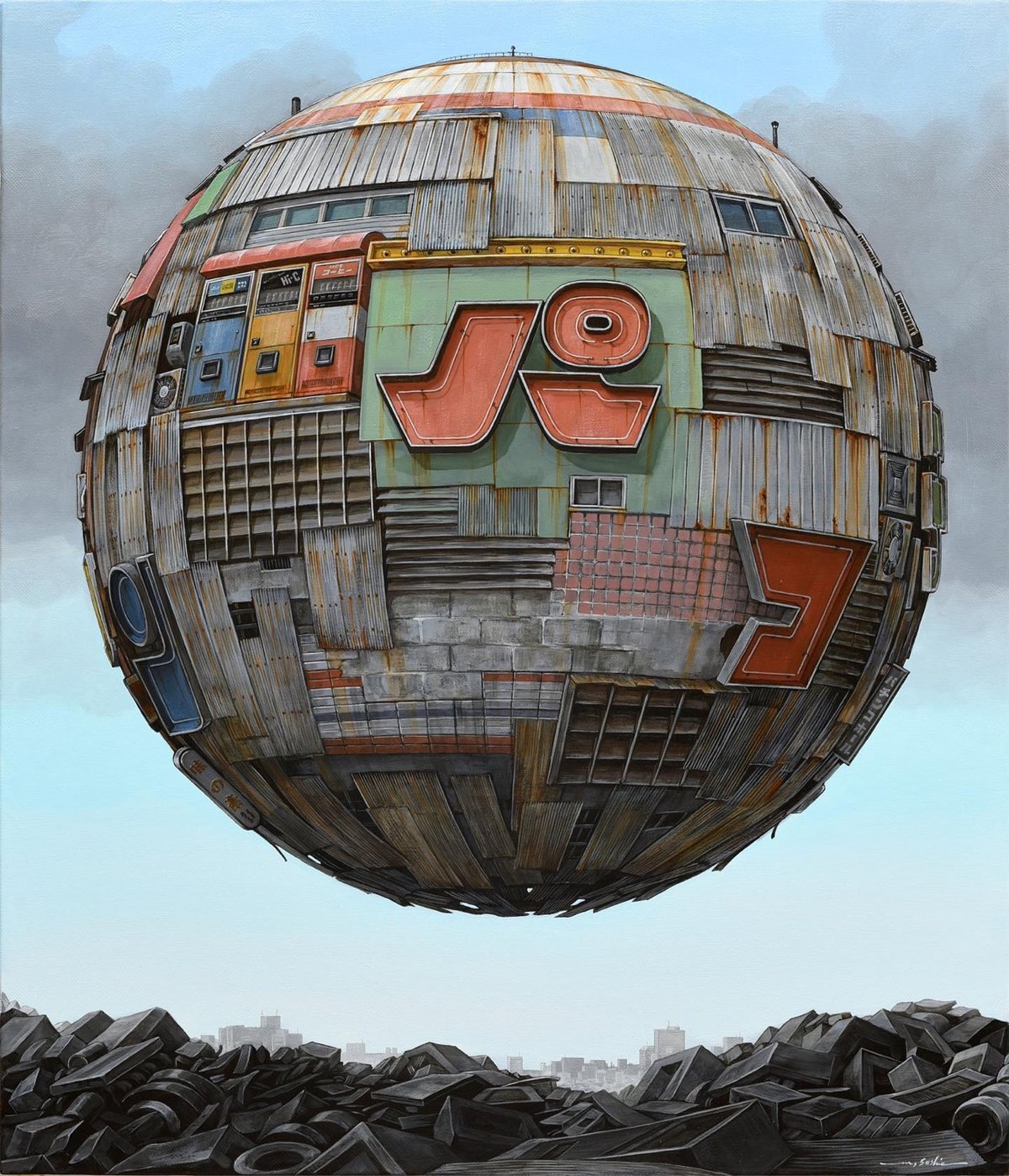
While these might look like they are AI-generated, these floating orb-structures created by Masakatsu Sashie are actually oil paintings. You can check out more of his work on Instagram and Facebook. (via colossal)
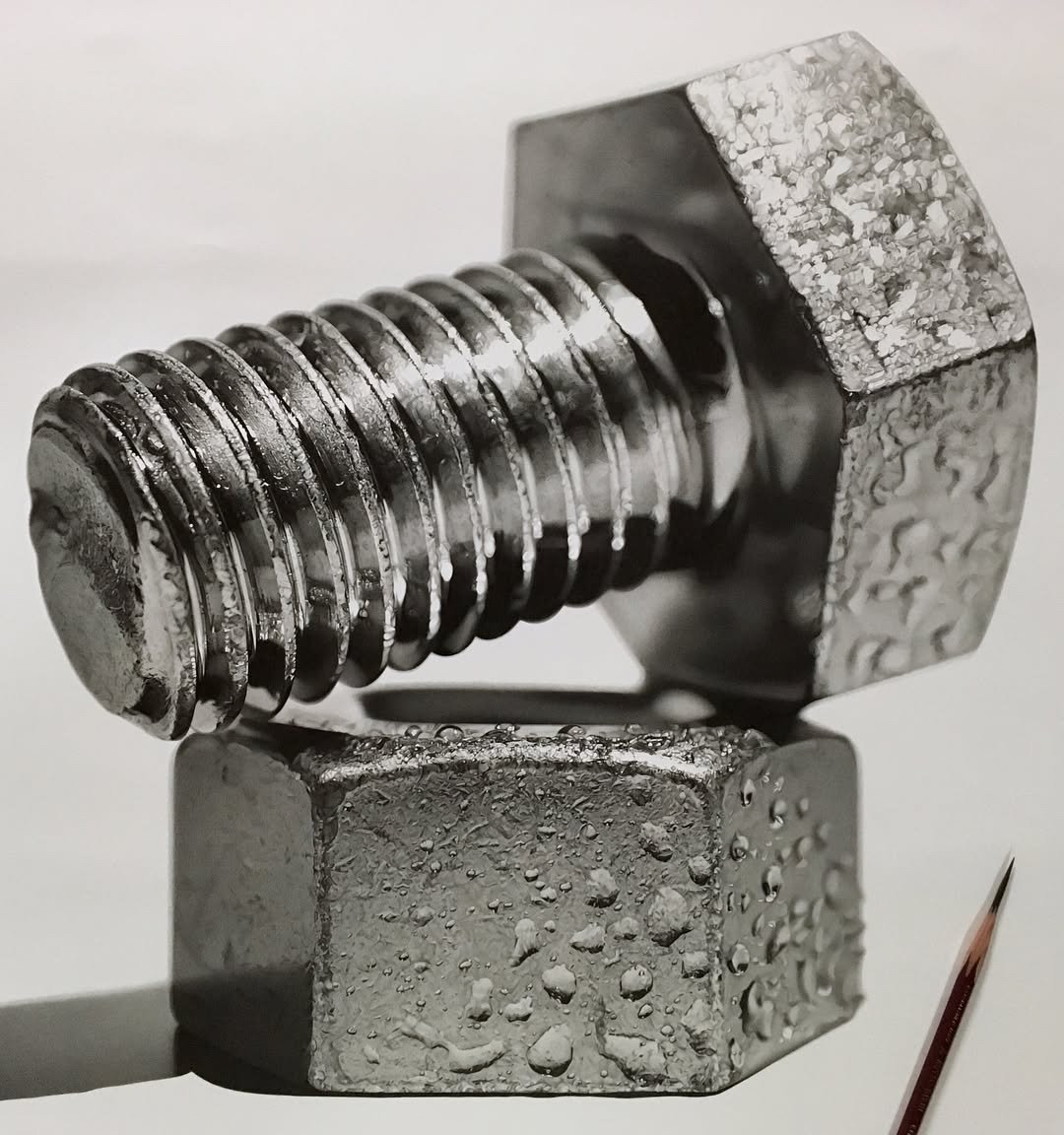
Wow, check out these amazing hyperrealistic pencil drawings by Kohei Ohmori. The detail is next-level…here’s a close-up view of the drawing above:
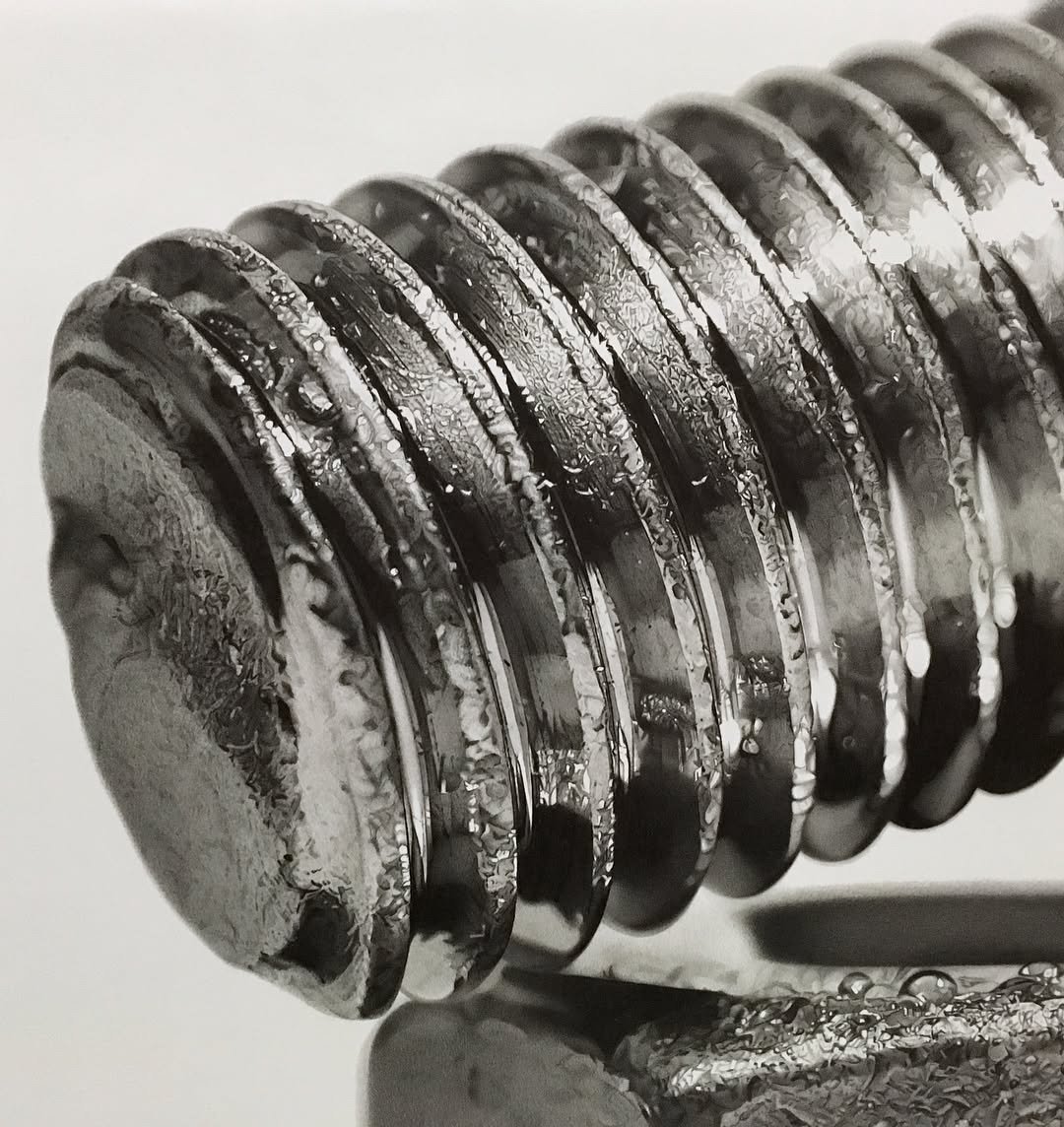
This drawing took 280 hours (~11.7 days) over a period of five months. You can check out some BTS and Ohmori’s other work on Instagram. (via clive thompson)
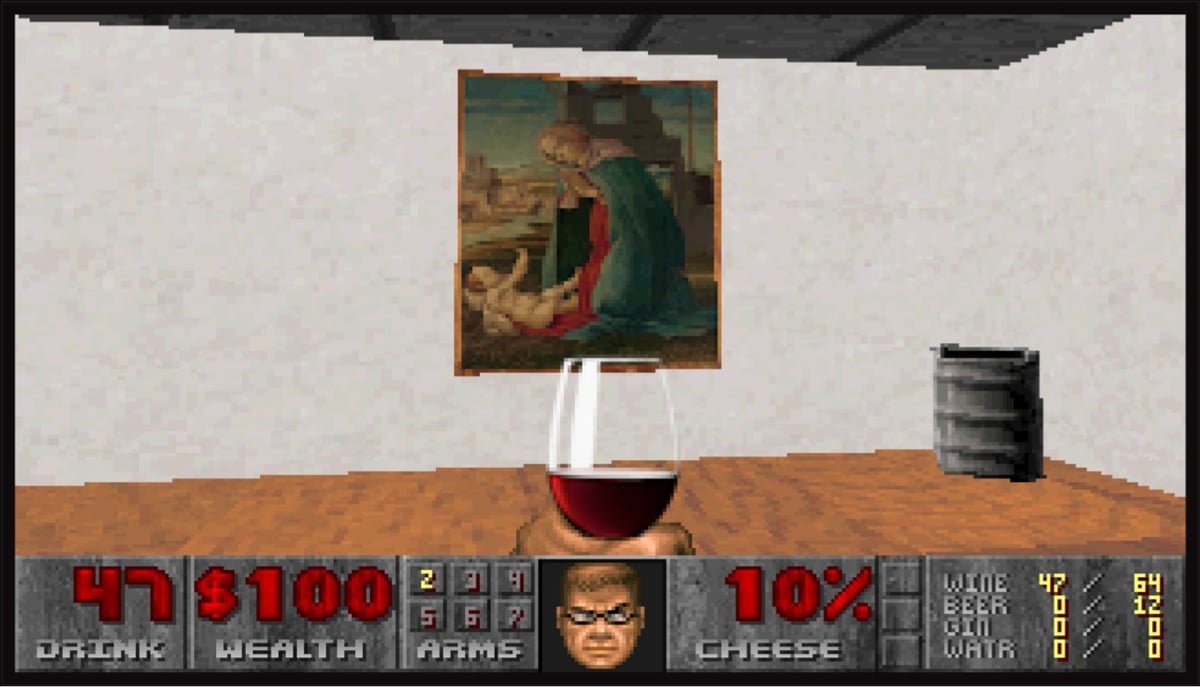
Have you ever wanted to browse art from the Metropolitan Museum in a first-person shooter interface? You are in luck because DOOM: The Gallery Experience exists.
DOOM: The Gallery Experience was created as an art piece designed to parody the wonderfully pretentious world of gallery openings.
In this experience, you will be able to walk around and appreciate some fine art while sipping some wine and enjoying the complimentary hors d’oeuvres in the beautifully renovated and re-imagined E1M1 of id Software’s DOOM (1993).
They sourced the art from the Met’s Open Access collection and in the game you can click through to see each piece on the Met’s website. Here’s a video of the gameplay:
And of course people are speedrunning it. (via waxy.org)
Curator James Payne’s Great Art Explained channel is one of YouTube’s gems. For his latest video, he takes a look at Leonardo da Vinci’s mural The Last Supper and explains what makes it such an unusual, impressive, and revolutionary work of art. Here’s how the main part of the video begins:
Milan, 1494: Leonardo da Vinci was an exceptional man, and everyone who met him described him as a genius. And yet, he was now 42 years old — a middle-aged man in an era when life expectancy was 40 — And he still hadn’t produced anything that would be considered a masterpiece by his contemporaries. Many of his works were unfinished or in private collections, there were no great public works that people could see, no architectural marvels and no distinguished altarpieces for cathedrals. Nothing that could be considered worthy of his potential.
Then, he was asked to paint a wall.
I found the discussion of how Leonardo’s knowledge of theatre — he was charged with “creating lavish plays and pageants for the Duke of Milan” — informed his work on The Last Supper particularly interesting. You’ll never see this painting the same way again after watching this video.
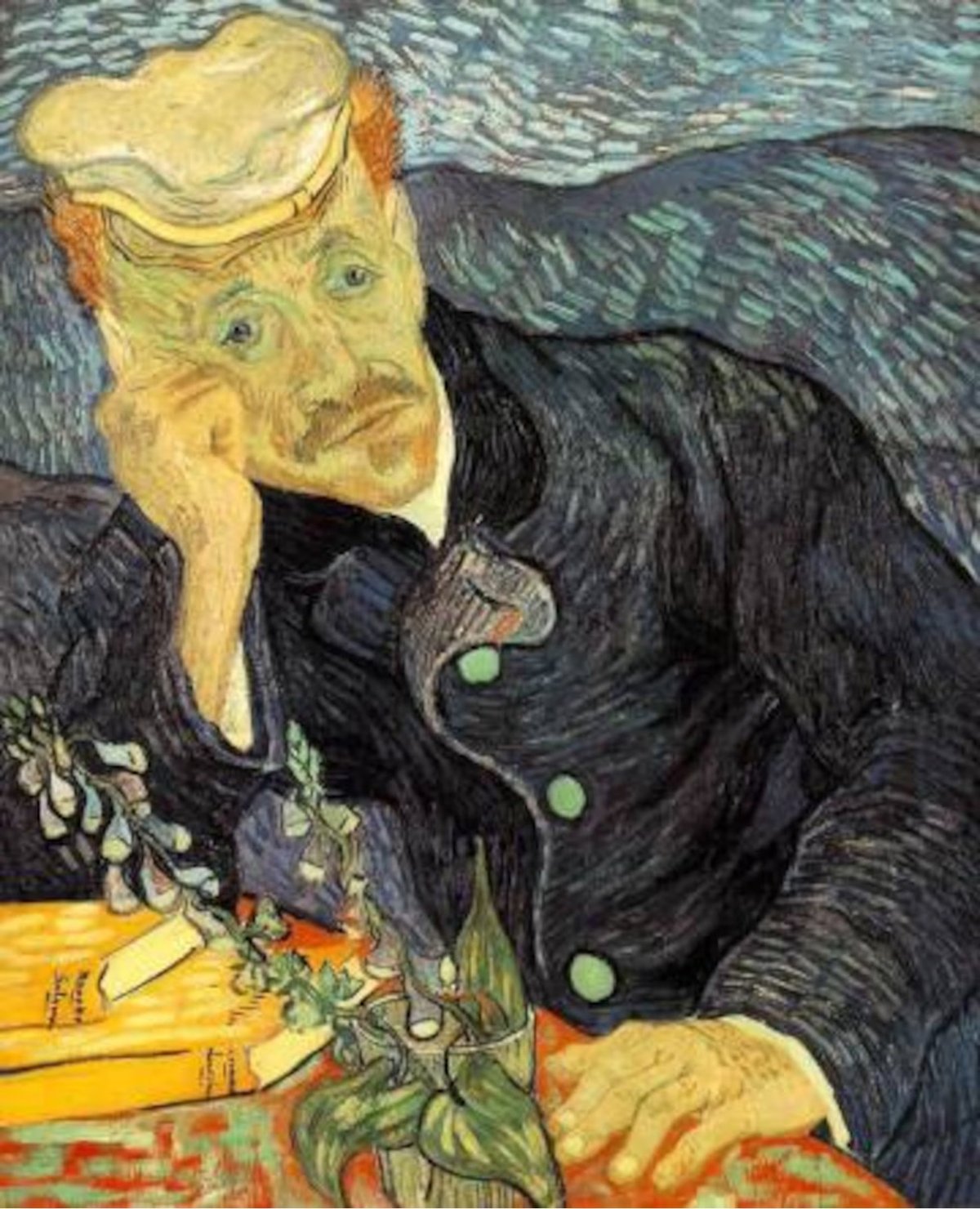
I didn’t know that the whereabouts of one of Vincent van Gogh’s most important works, a 1890 painting called “Portrait of Dr. Gachet”, is unknown and that the painting had not been seen publicly since the 1990s. This investigation into the potential location of the painting is an engrossing read as well as a good opportunity to appreciate van Gogh’s piece.
Many experts encountered along the way had no clue what had happened to the painting. Four art world insiders said they suspect the painting is held by a private, very rich European family. All parties had an opinion on the core question that drives such a quest: Do collecting families have any responsibility to share iconic works of art with the broader public?
The question has grown more relevant as it becomes clearer that most museums can no longer outbid billionaire collectors for the greatest works of art. Few paintings make that point plainer than Dr. Gachet’s portrait, a piece long on public display that has now vanished into someone’s private home or a climate-controlled warehouse.
For many in the art world, such a work is not just a creative expression, but part of a trade that survives because of the interest and deep pockets of collectors who may, or may not, choose to share their work.
“People are allowed to own things privately,” said Michael Findlay, who was involved as a specialist for Christie’s in the 1990 auction sale of the Gachet. “Does it belong to everybody? No, it does not.”
See also a new short documentary on the missing painting:
Watching these expert restorers mend & refresh a pair of vintage Star Wars posters (neither of which features the logo we’re familiar with today and one of which is signed by the designer) is both fascinating and relaxing. It’s like the posters are having a spa day: bit of a soak, a gentle scrub, some light bodywork, and voila, you’re brand new. (via meanwhile)


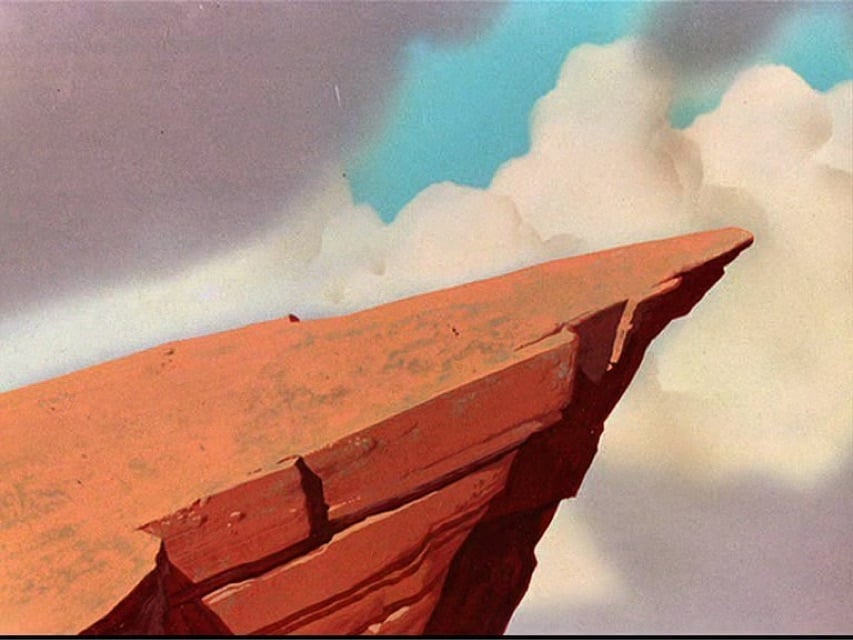

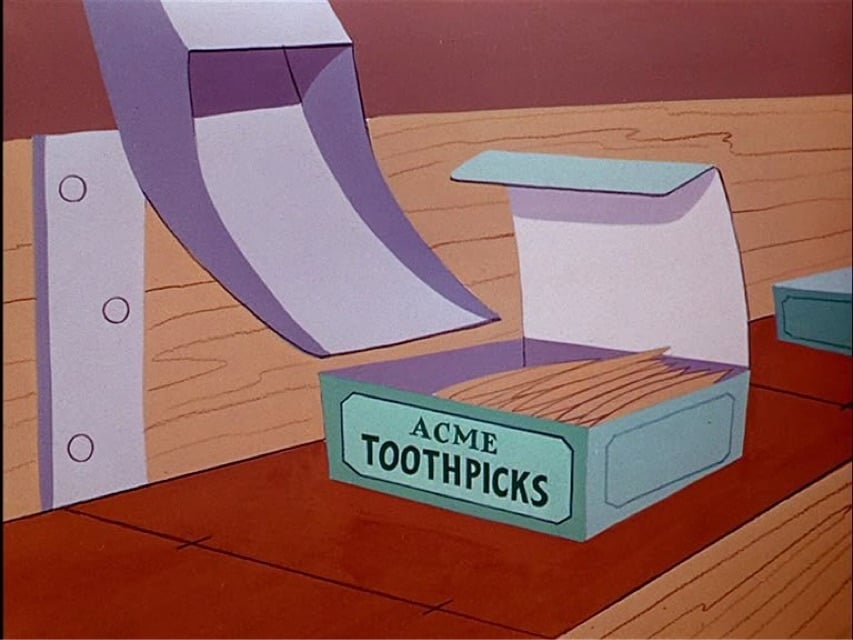
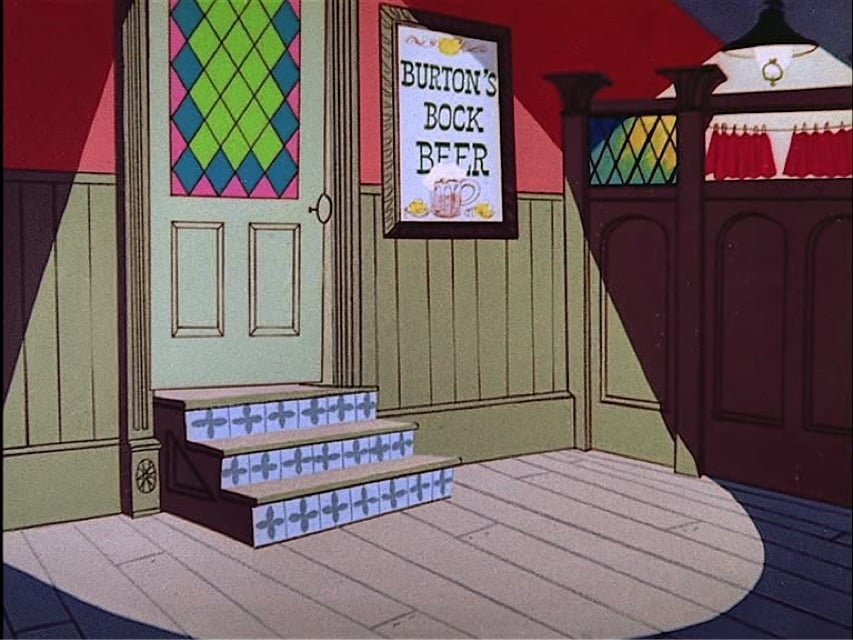
This Instagram account posts the backgrounds of Looney Tunes cartoons with the Looney Tunes characters removed. As @presentcorrect.bsky.social remarks, these images are also a great resource for color palettes.
My friend Josh LaFayette spends the very last part of the year making fan art for his favorite albums of the year and despite all the pieces being visually different there’s a through line which make all of them immediately recognizable to me as his art. He’s putting out a few a week on his Instagram, but I grabbed these two because I also loved these albums.

Laura Jane Grace’s - Hole in My Head
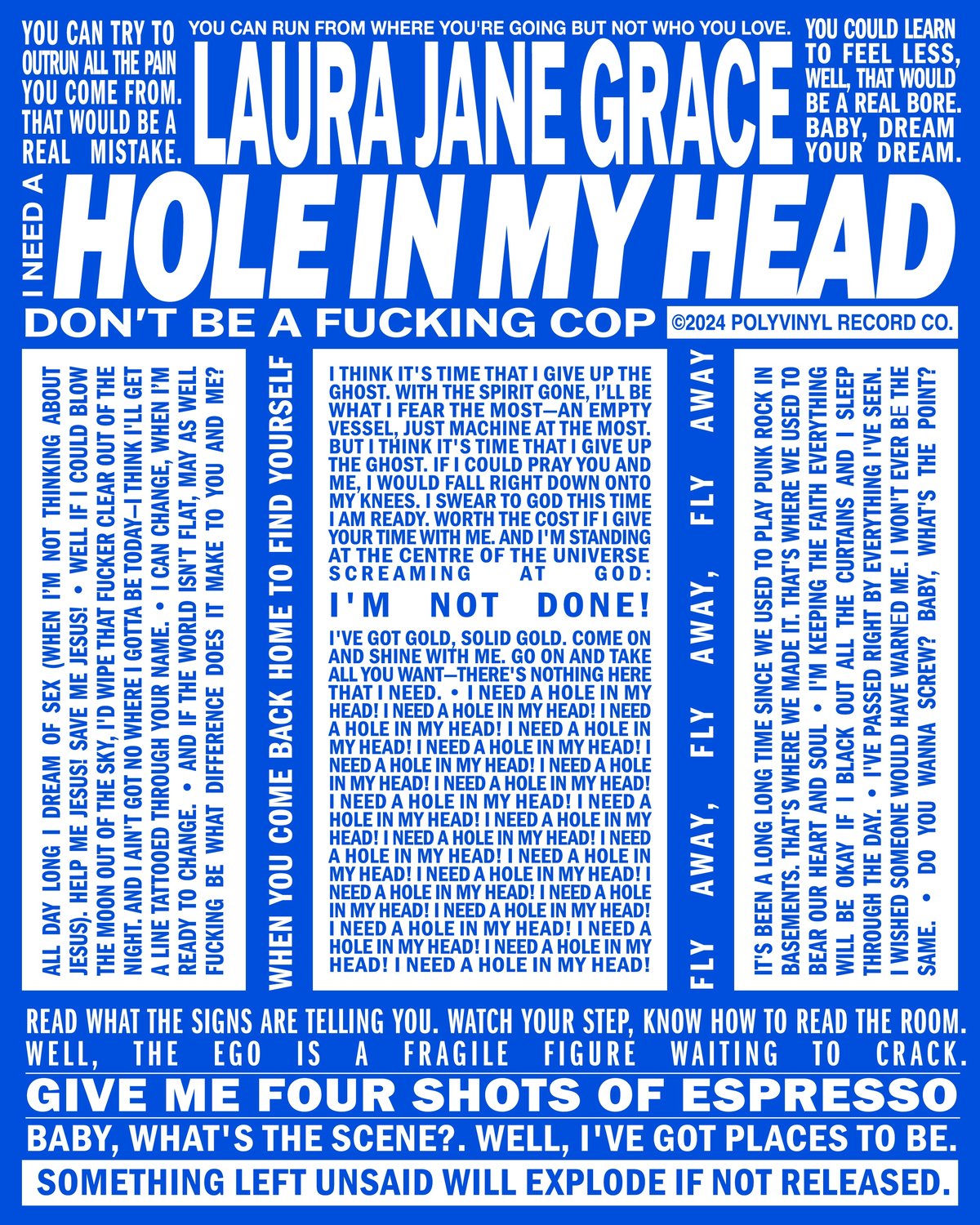
My favorite part of this series is all of the pieces are physical, not just a file on the computer. Every piece is a reference to the design language present in the age of accessible digital printing—they’re inspired by what some might call “naïve” or “uniformed” designs that are common in the American visual vernacular. The Moreland piece is a take on the flyers for psychics you see all over and the LJG piece is your favorite hippie soap.

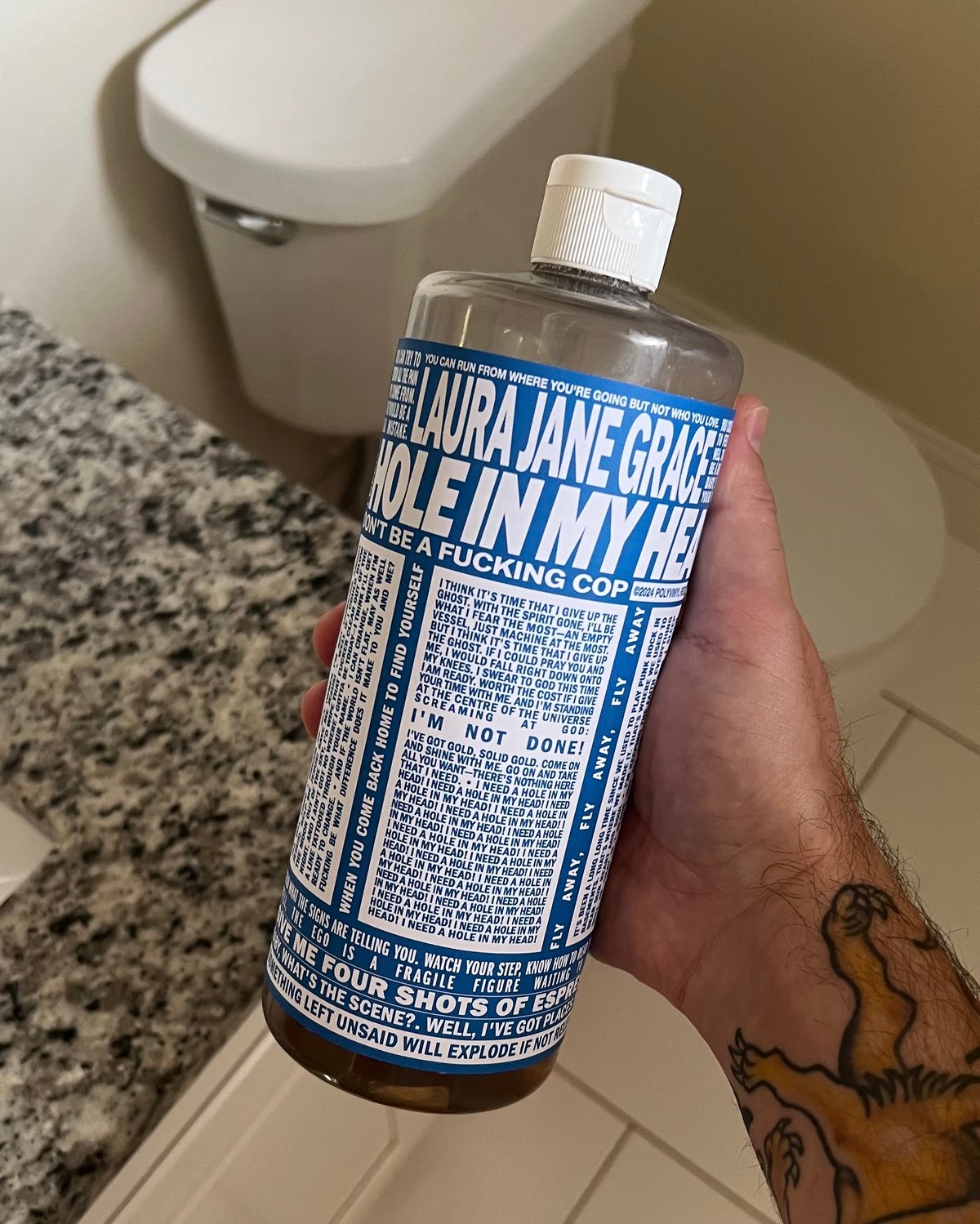
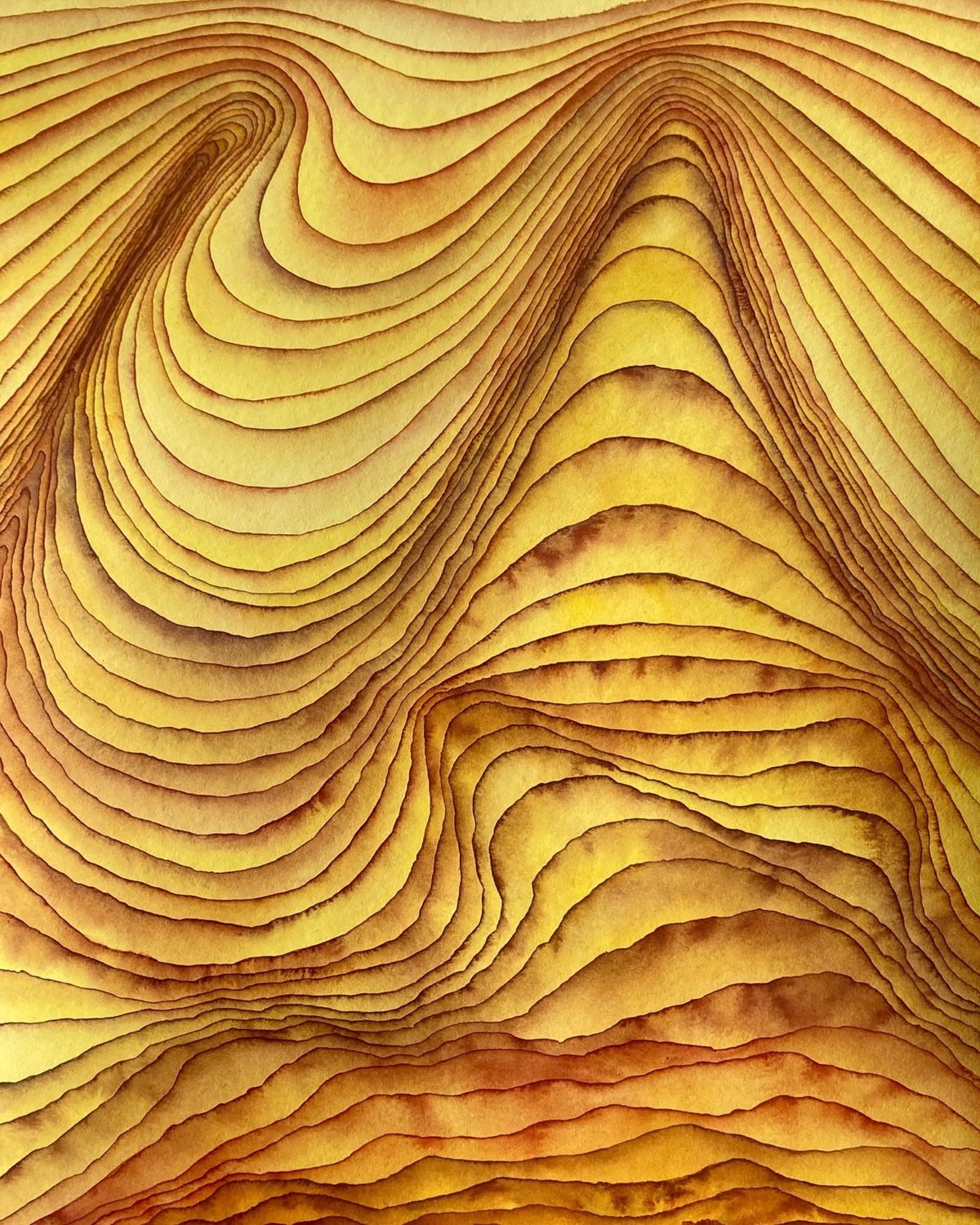

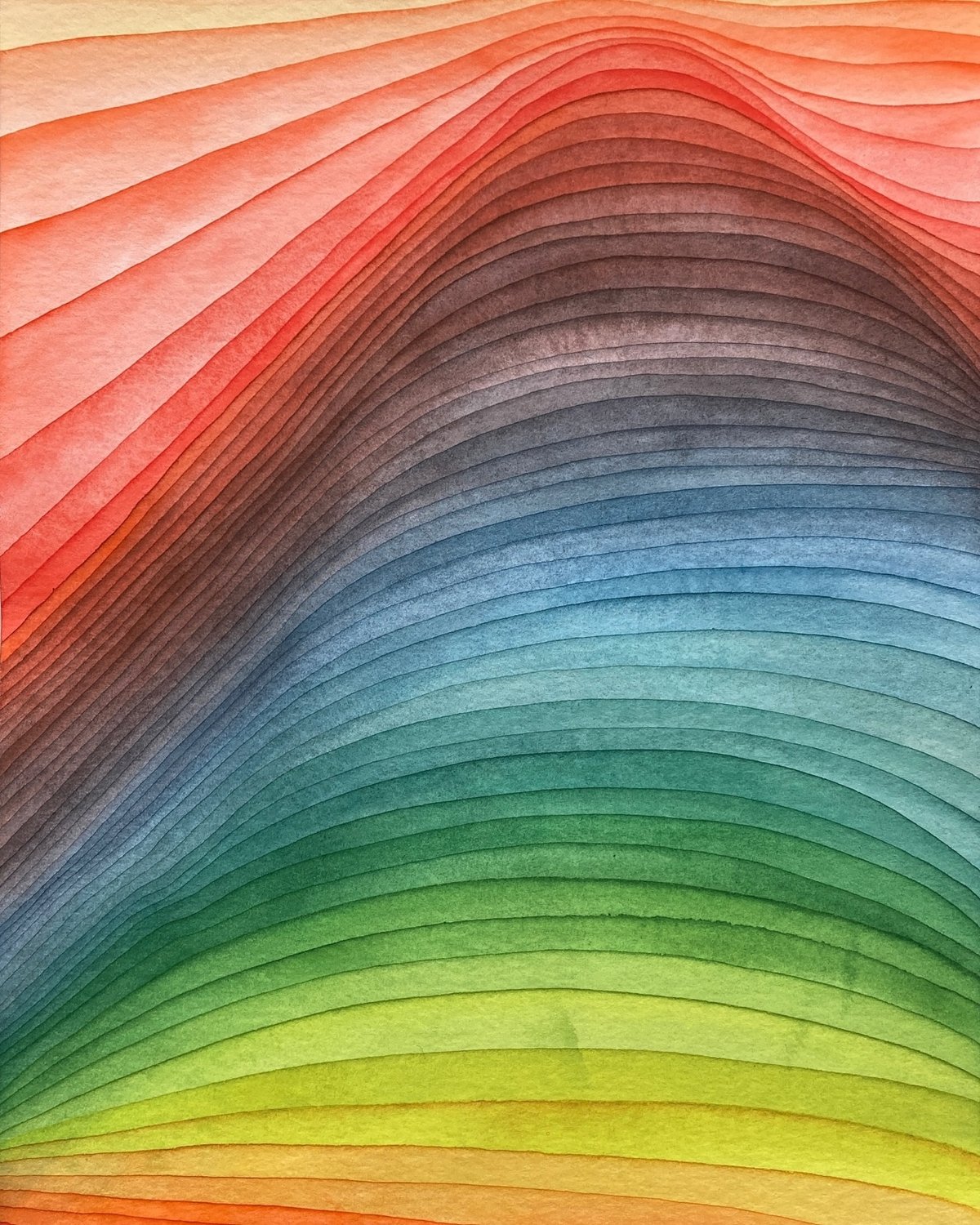
You know me, I love a good gradient. These watercolors are from a series called Strata by Mikael Hallstrøm Eriksen, an artist who uses “repetitive and accumulative mark-making” in his work.
The works in the Strata-series are inspired by geological and natural phenomena — sediments, horisons, bodies of water, etc. These works explore a colourful imagery of accumulation, distance and transformation. Within geology and archeology, strata (singular: stratum) refers to layers (of rock, soil, culture etc.) possessing internally consistent characteristics making them distinguishable from each other.
You can check out more of Eriksen’s work on Instagram.
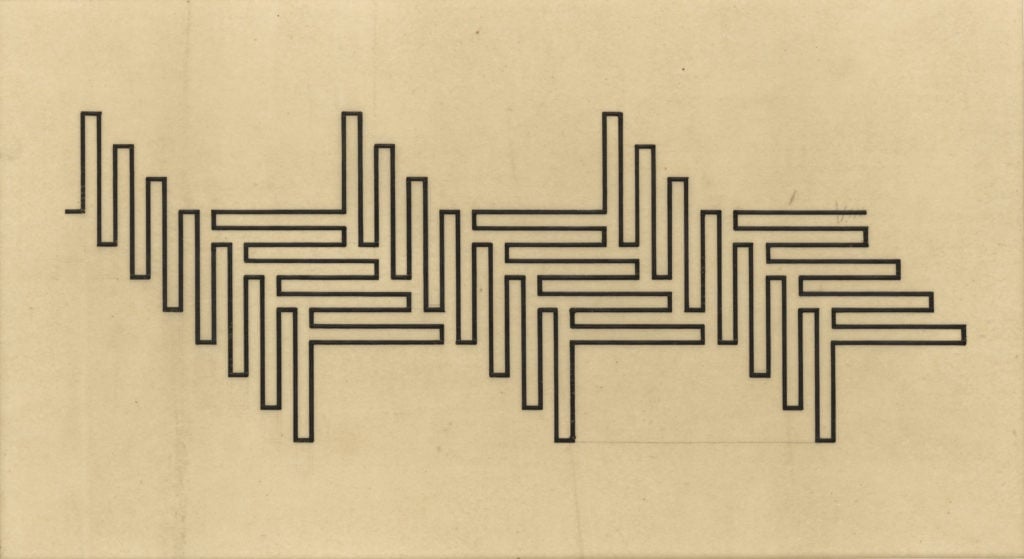

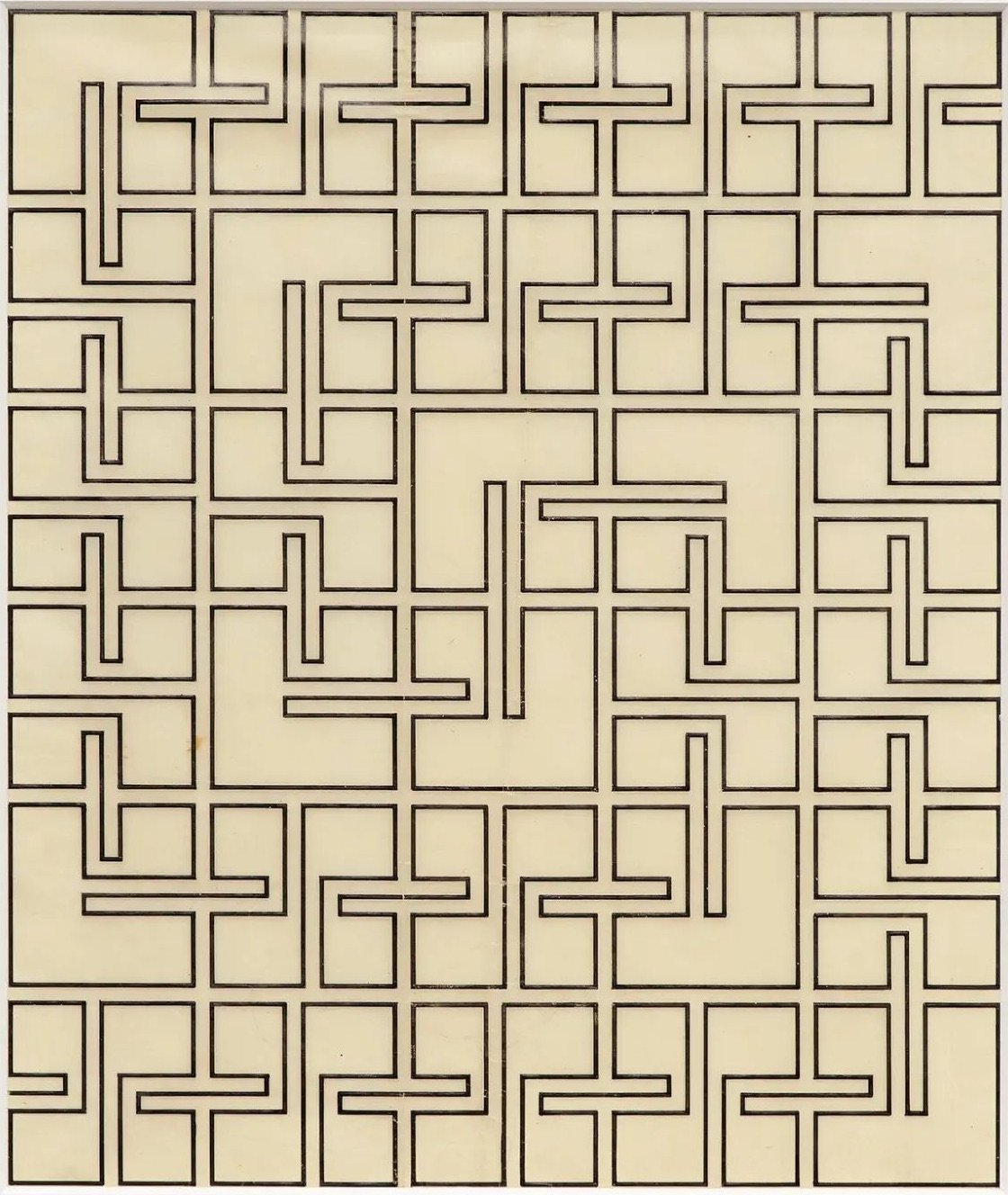
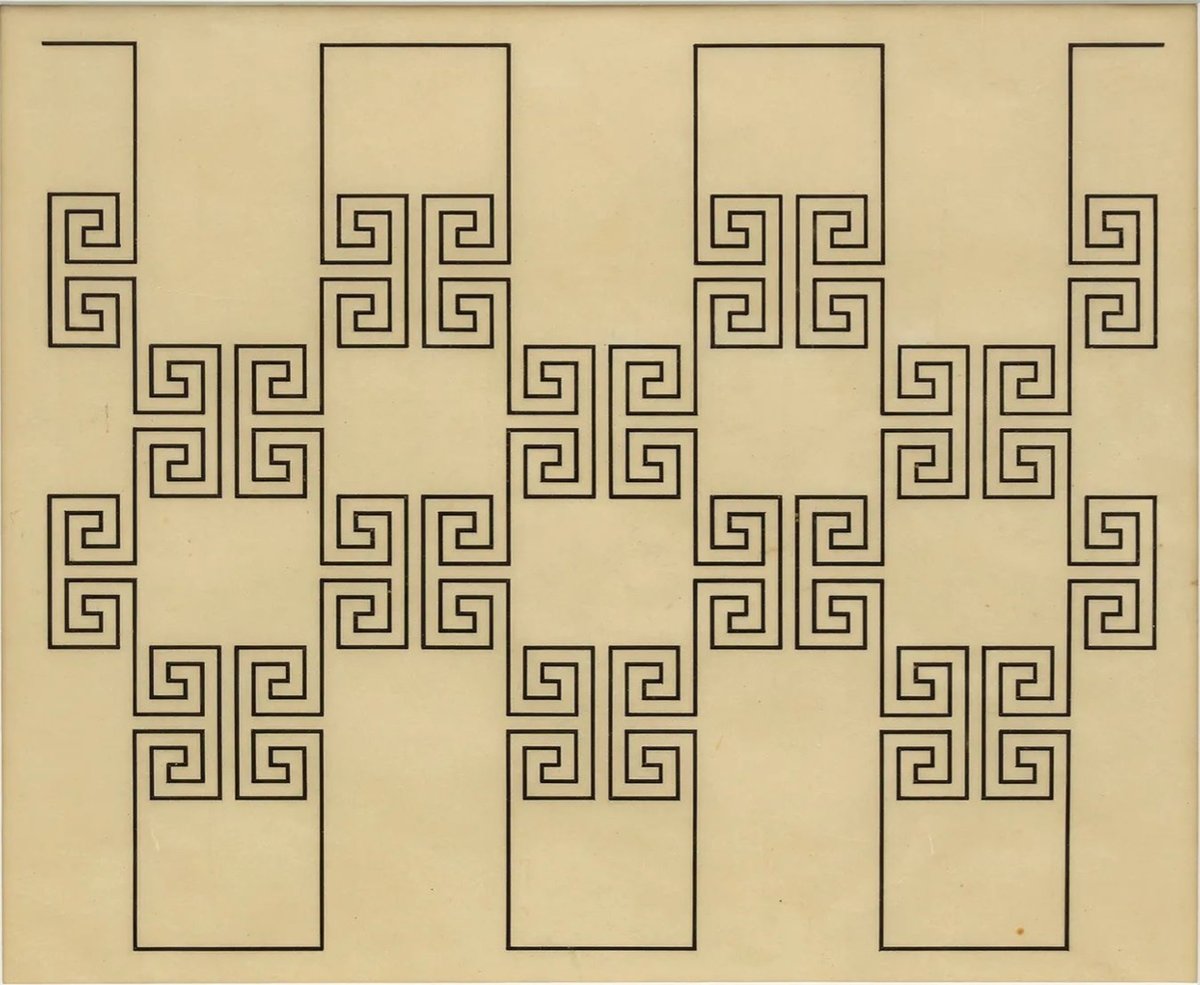

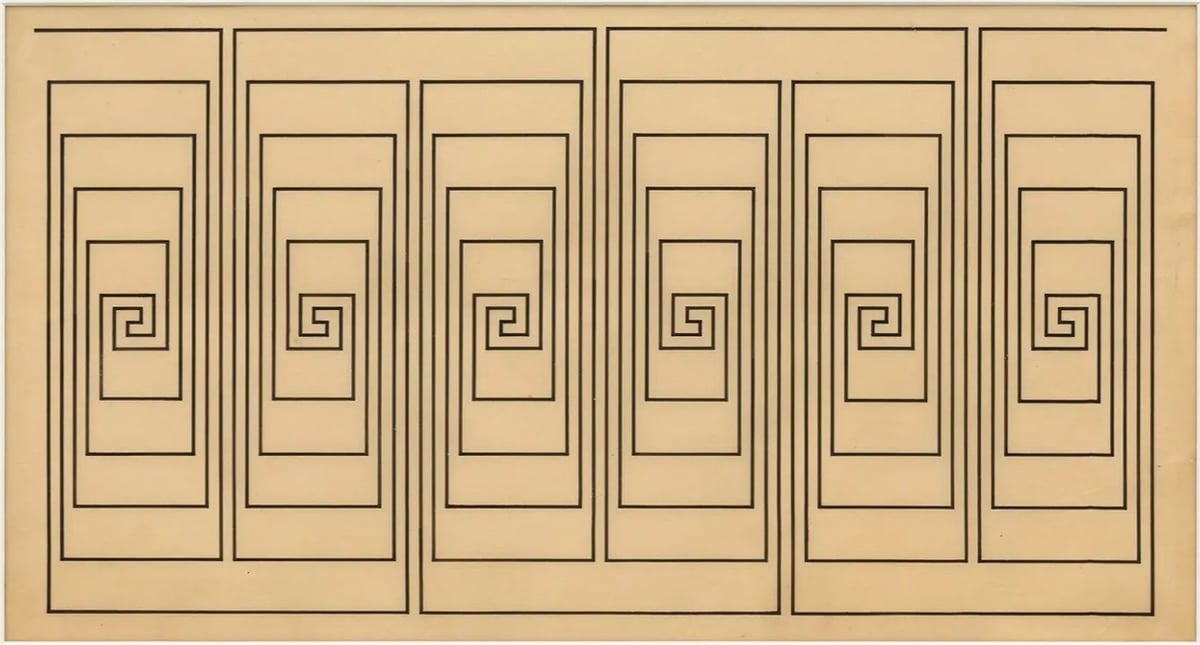
Wacław Szpakowski was a Polish architect and engineer who, over the course of his life and in secret, made a series of drawings of mazes from single continuous lines. From The Paris Review:
The drawings, he explains, “were experiments with the straight line conducted not in research laboratories but produced spontaneously at various places and random moments since all that was needed to make them was a piece of paper and a pencil.” Though the kernels of his ideas came from informal notebooks, the imposing virtuosity and opaqueness of Szpakowski’s final drawings are anything but spontaneous or random. His enigmatic process — how he could draw with such supreme evenhandedness, could make his designs so pristine and yet so intricate — is hinted at only in his few visible erasure marks.
Geoff Manaugh writes at BLDGBLOG:
But the appeal of Szpakowski’s work would appear to extend well beyond the architectural. At times they resemble textiles, weaving diagrams, computer circuitry, and even Arts & Crafts ornamentation, like 19th-century wallpapers designed for an era of retro-computational aesthetics.
Woodworking templates, patent drawings for fluidic calculators, elaborate game boards — the list of associations goes on and on.
Of course, I was reminded of Dom’s challenge to Ariadne to draw a difficult maze in Inception, the light cycles in Tron, and the Etch A Sketch…but to each their own.
You can explore more of Szpakowski’s work at his website, at culture.pl, and at the Miguel Abreu gallery website.
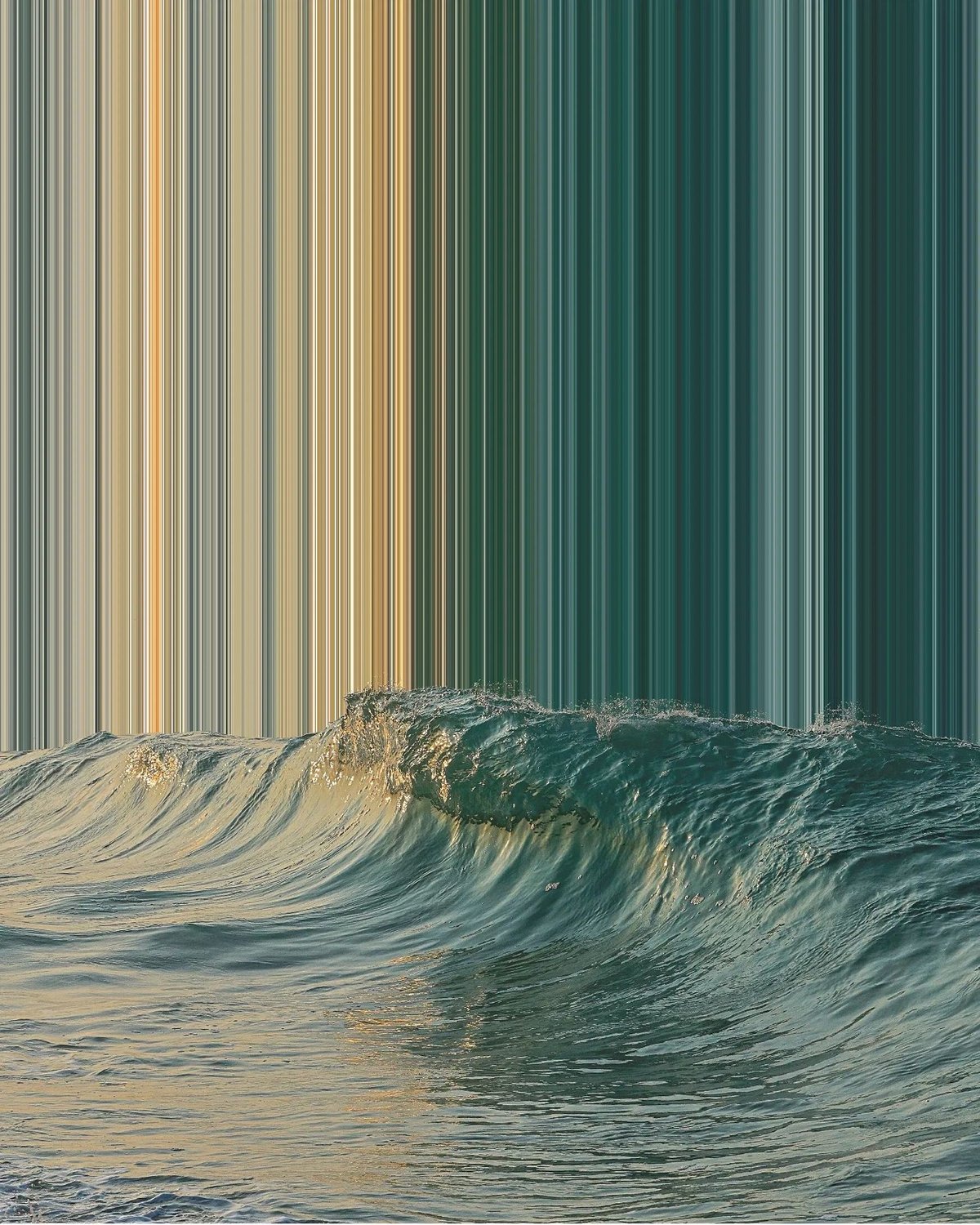
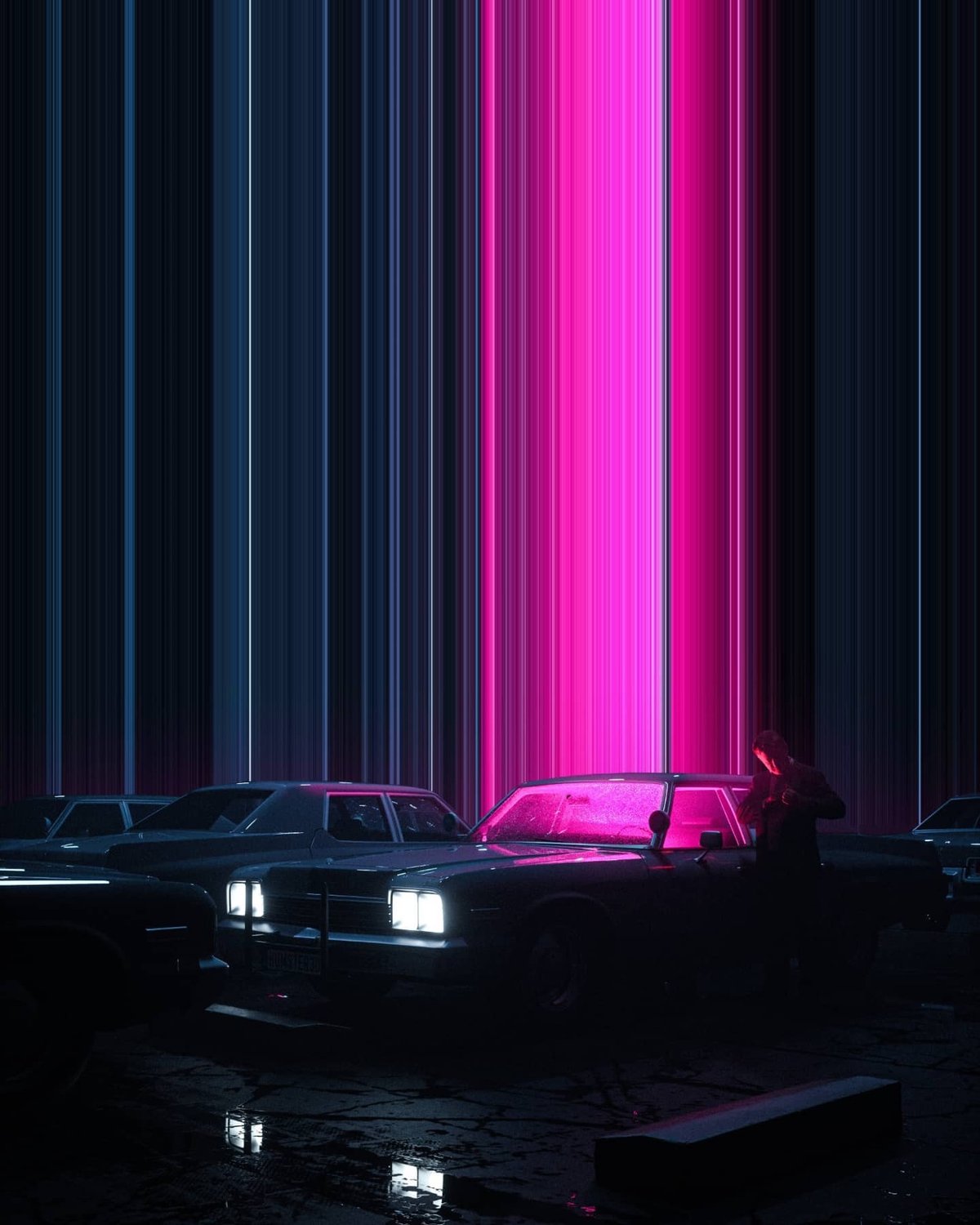
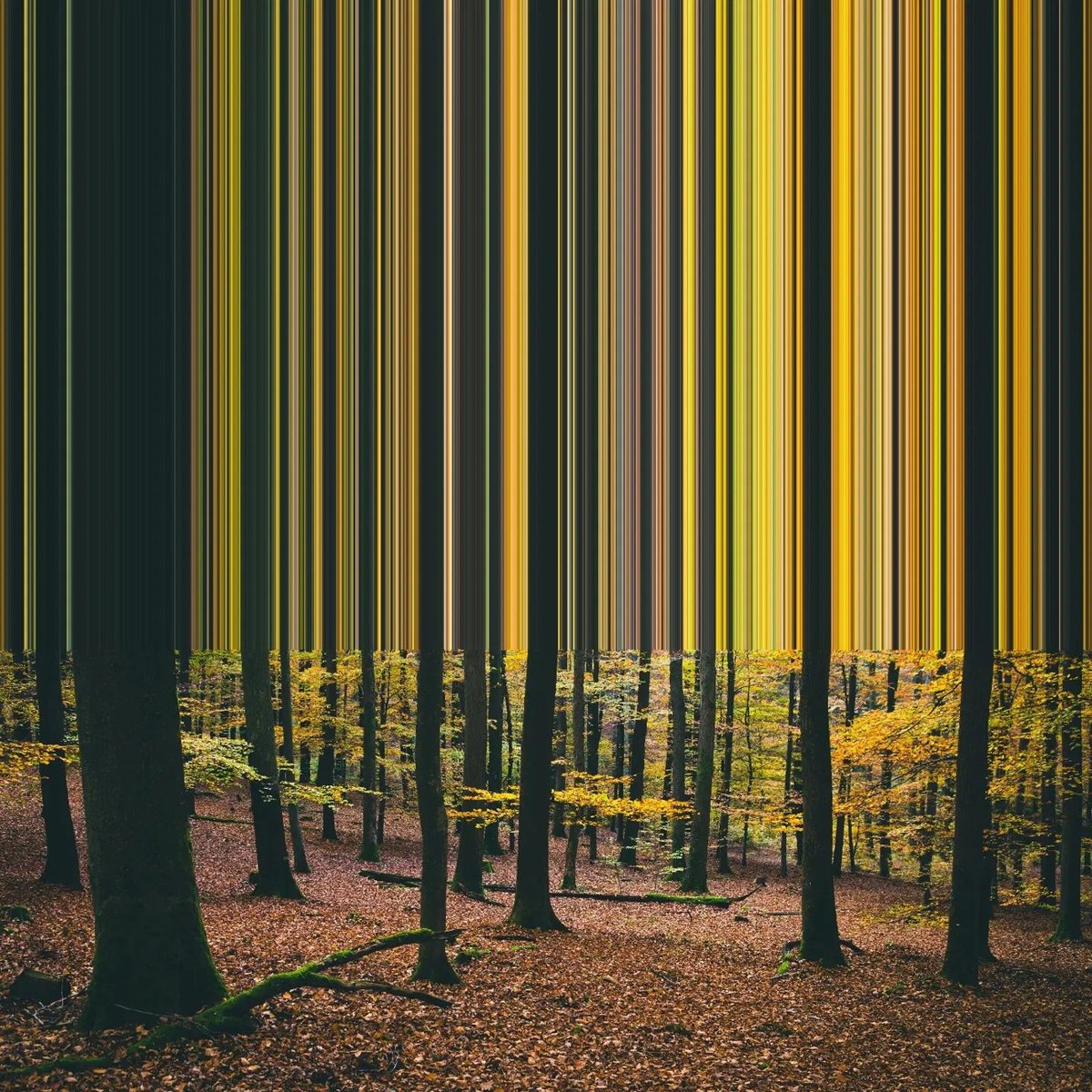
Artist and “pixel pusher” Niall Staines creates these slightly surreal scenes by pulling a 1-px slices to the edge of his images. I’ve used this technique myself but Staines deploys it to great effect here. I love these. You can find more of his work on his website and Instagram.

From the NIH, a collection of 2,000+ public domain science and medical art visuals (molecules, plants, viruses, proteins, brushes for repeating items like DNA, fungi, equipment…). High-resolution, free to use — scientists on social media seem pretty pumped about this.
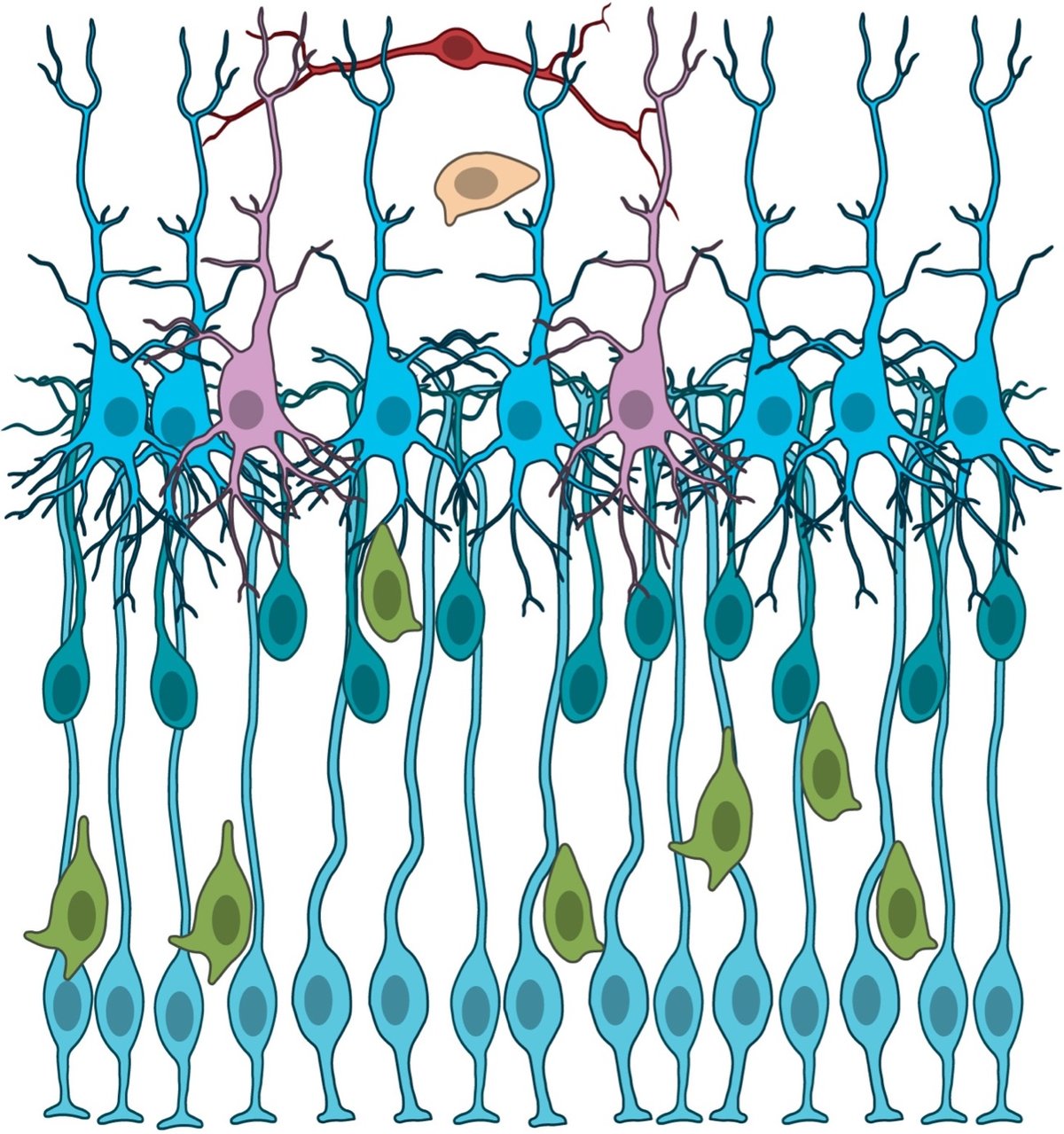


See also PhyloPic, a collection of 10,000 “free silhouette images of animals, plants, and other life forms, available for reuse under Creative Commons licenses”. (via @waldo.net)
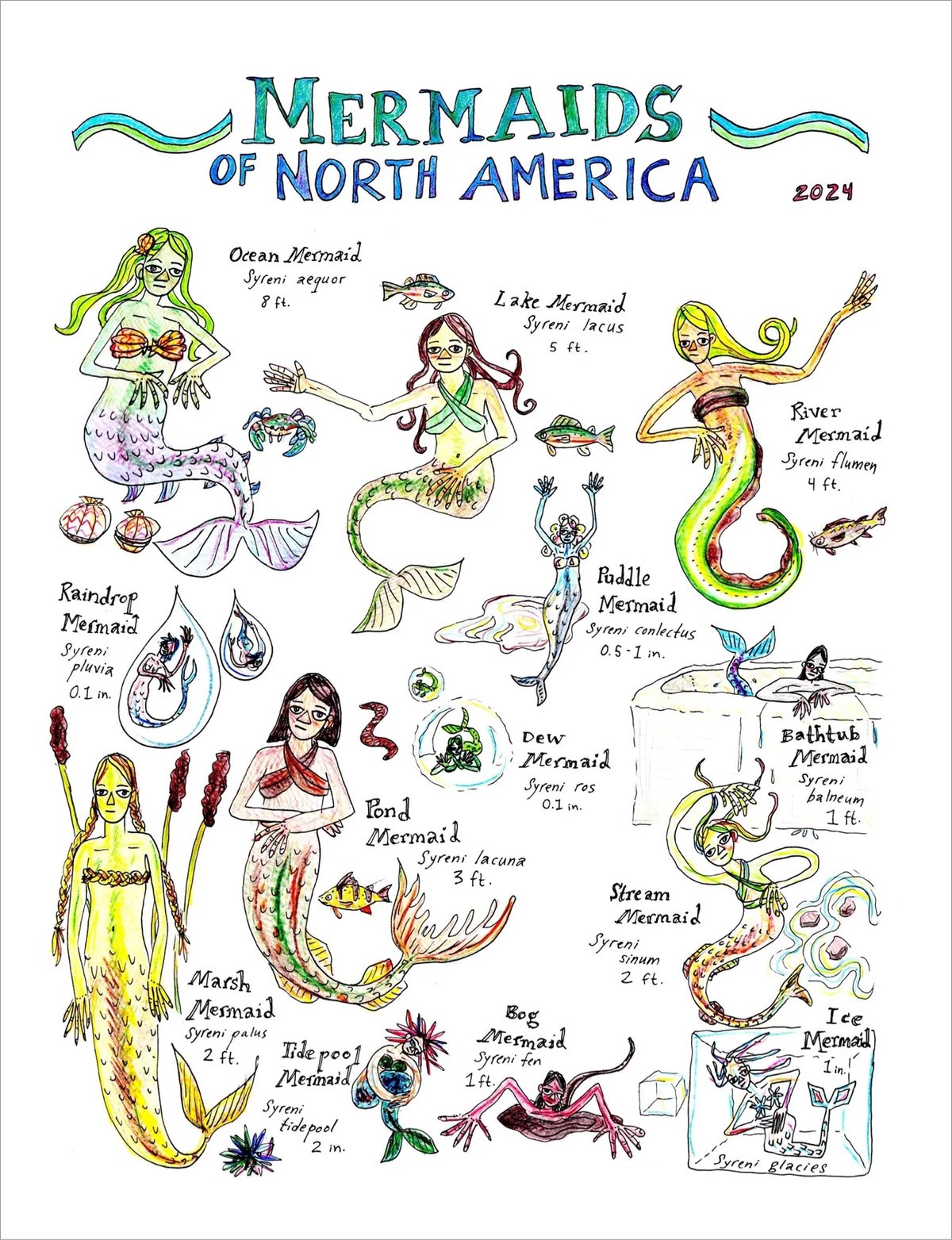
Edith Zimmerman has put some new stuff in her Etsy shop, including original watercolors and this print of Mermaids of North America (which I love).
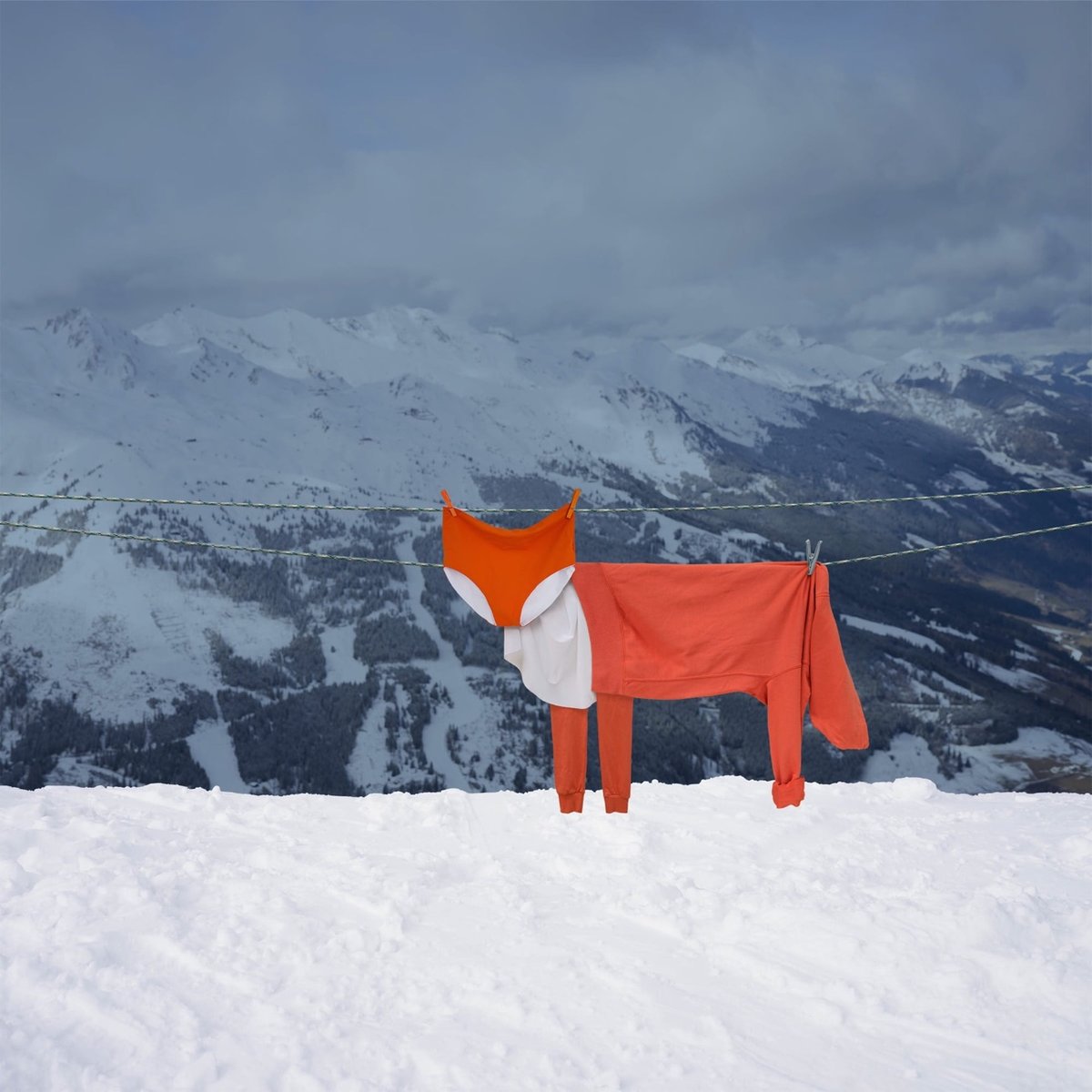
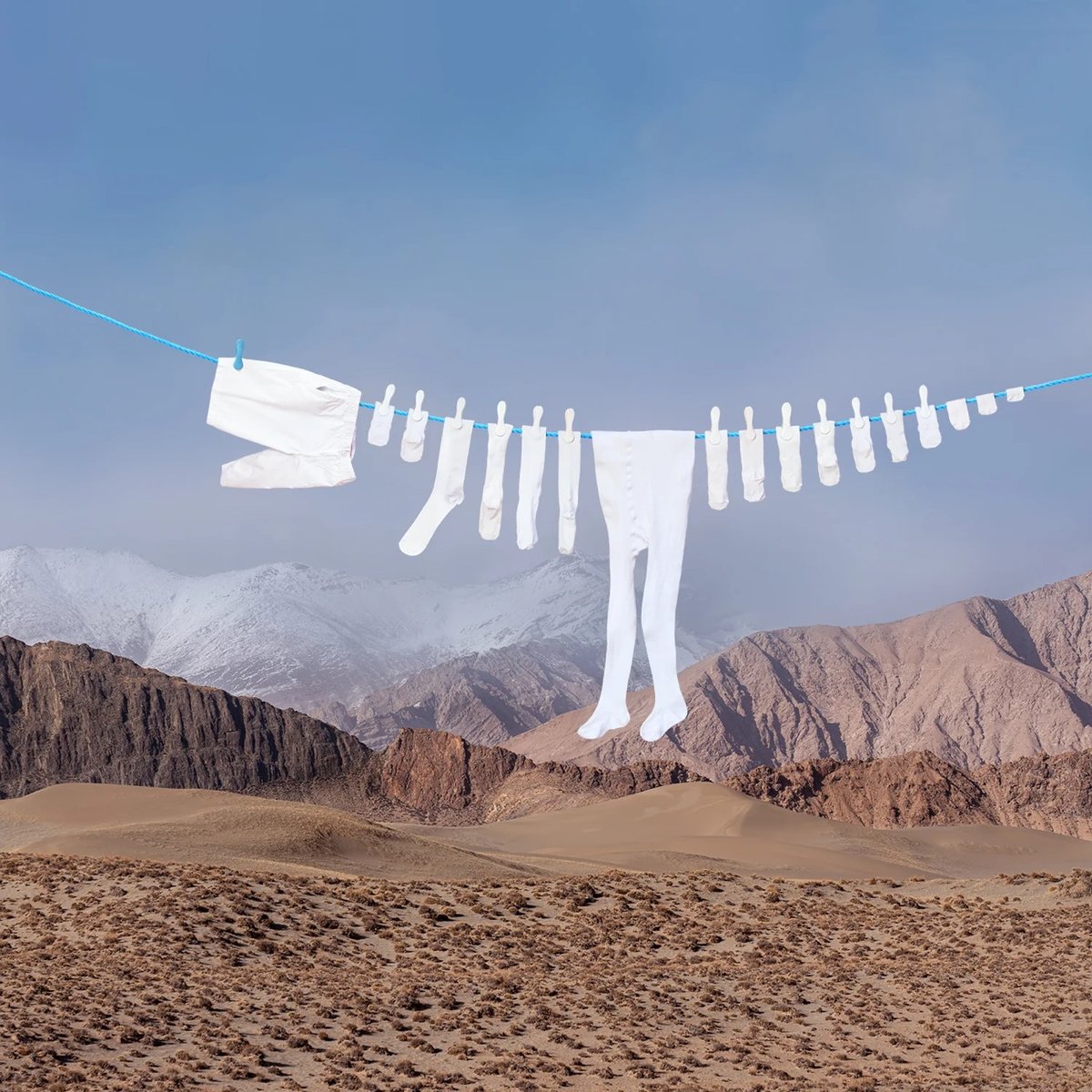
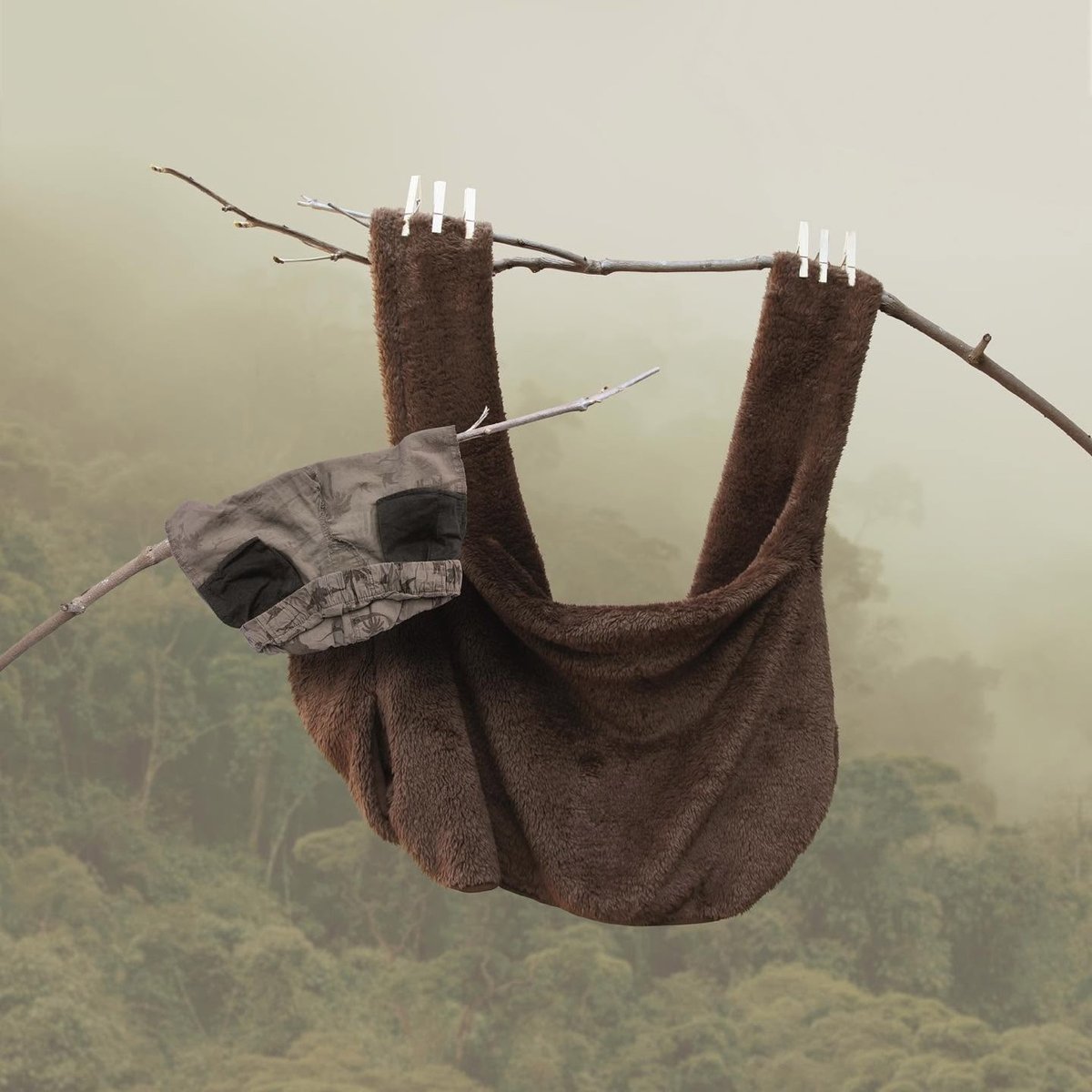
Multidisciplinary artist Helga Stentzel cleverly hangs laundry items on clotheslines to make abstract animal shapes. You can find more of her household surrealism on Instagram. (via colossal)
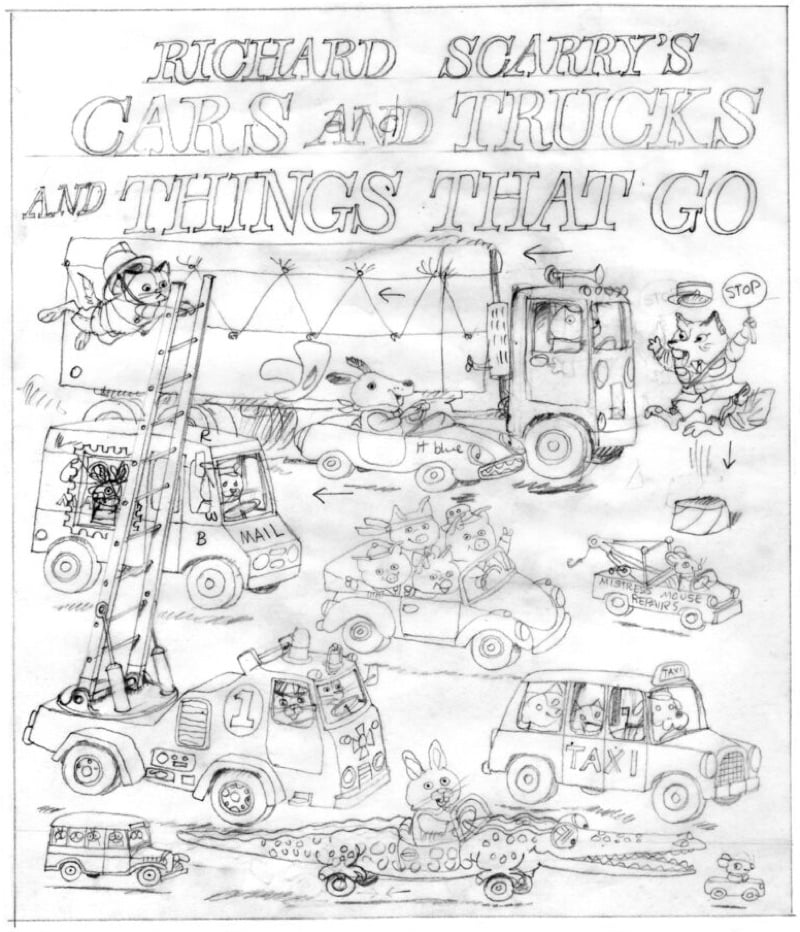
Well! In the Yale Review, Chris Ware (one of my favorite cartoonists) writes about Richard Scarry (one of my favorite children’s book authors) and Cars and Trucks and Things That Go (one of my favorite books).
This year is the 50th anniversary of Scarry’s 1974 Cars and Trucks and Things That Go, which strikes me as a commemoration worthy of ballyhoo, especially now that, as a dad myself, I’ve spent so much time ferrying my own daughter to and from school and birthday parties in various cars that-well, mostly goed. (I’ve owned five automobiles in my life, all of them cheap, one of which smoked and required the driver’s side door to be kept shut with a bungee cord hooked to the opposite armrest, stretched across both driver and passenger. What can I say? I was a young cartoonist on a cartoonist’s budget.)
Unlike those budget vehicles, however, the new deluxe Penguin Random House anniversary edition of Cars and Trucks and Things That Go is lavishly well-made, attentively reprinted with sharp black lines and warm, rich, watercolors. It includes an especially lively afterword by Scarry’s son Huck, in which he explains, using language even a kid can understand, how his dad wrote and drew the book, as well as hinting at what it was like to grow up as the son of arguably the world’s most popular and successful children’s book author.
Reader, I have never clicked “buy” faster than I did when ordering the 50th anniversary version of Cars and Trucks and Things That Go — I’m very much looking forward to peeking behind the scenes. But also, do read Ware’s whole piece…it’s an inspiring review of Scarry’s career & impact and contains all manner of little observations like these:
(Lowly was perhaps the first children’s book animal character with a real nod to the ADA and the myth of “dis”-ability, and cheerfully makes his linear form work in all sorts of inspiring and disarmingly moving ways.)
And:
But the more one looks at his work, the more one sees how the European daily grocery trip, the walk to a nearby shop or tradesman’s guild, the tiny apple car fit for a worm are not part of the blowout-all-in-for-oneself-oil-fueled-free-for-all toward which America was barreling in the late 1960s.
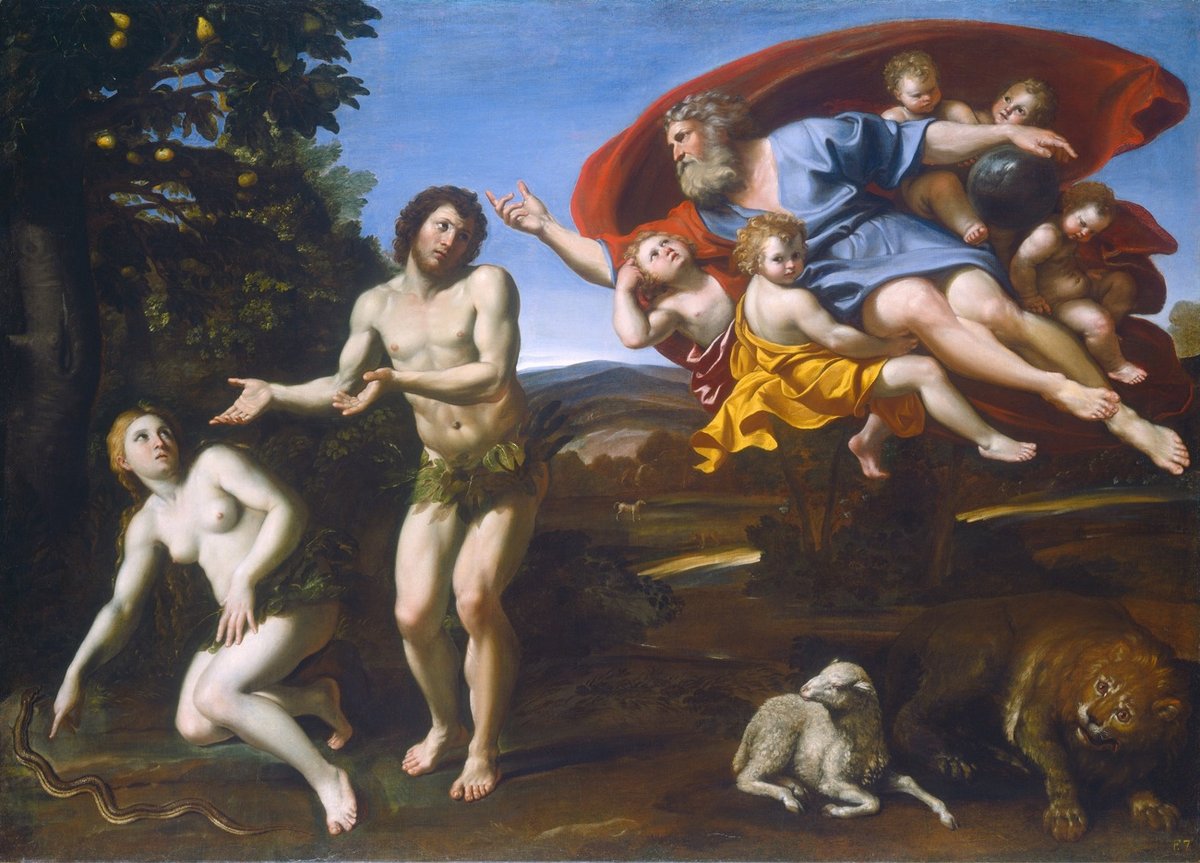
From Danielle Coffyn, a poem called If Adam Picked the Apple. Here’s the first bit of it:
If Adam Picked the Apple
There would be a parade,
a celebration,
a holiday to commemorate
the day he sought enlightenment.
We would not speak of
temptation by the devil, rather,
we would laud Adam’s curiosity,
his desire for adventure
and knowing.
You can read the rest of the poem here and preorder her poetry collection of the same name.
BTW, the hilarious painting is The Rebuke of Adam and Eve (1626) by Domenichino. That Adam, what a wanker.
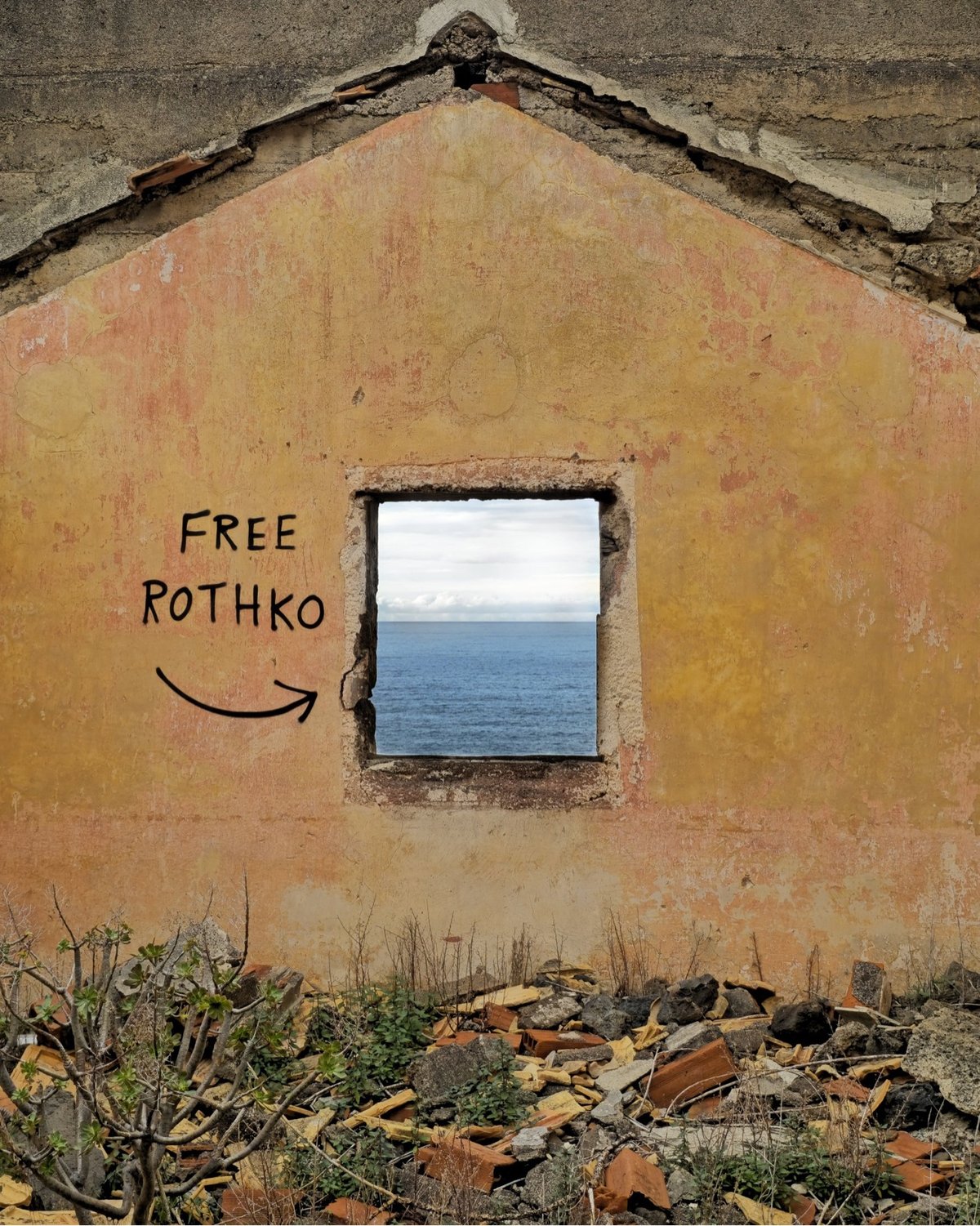
From French street artist OakOak, a reminder that art is everywhere and that art comes from everywhere. From their website and Instagram, here are a few more pieces that caught my eye:

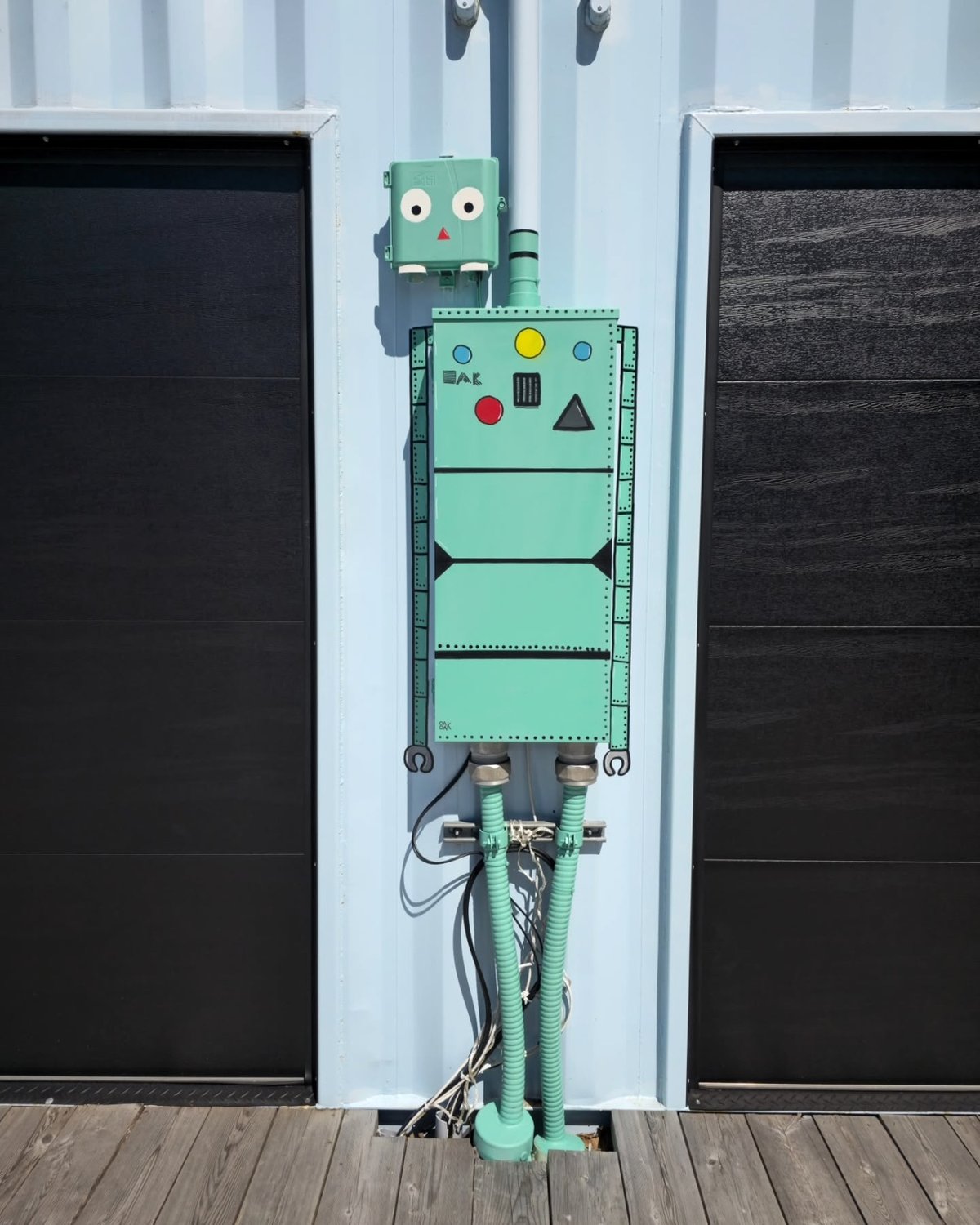
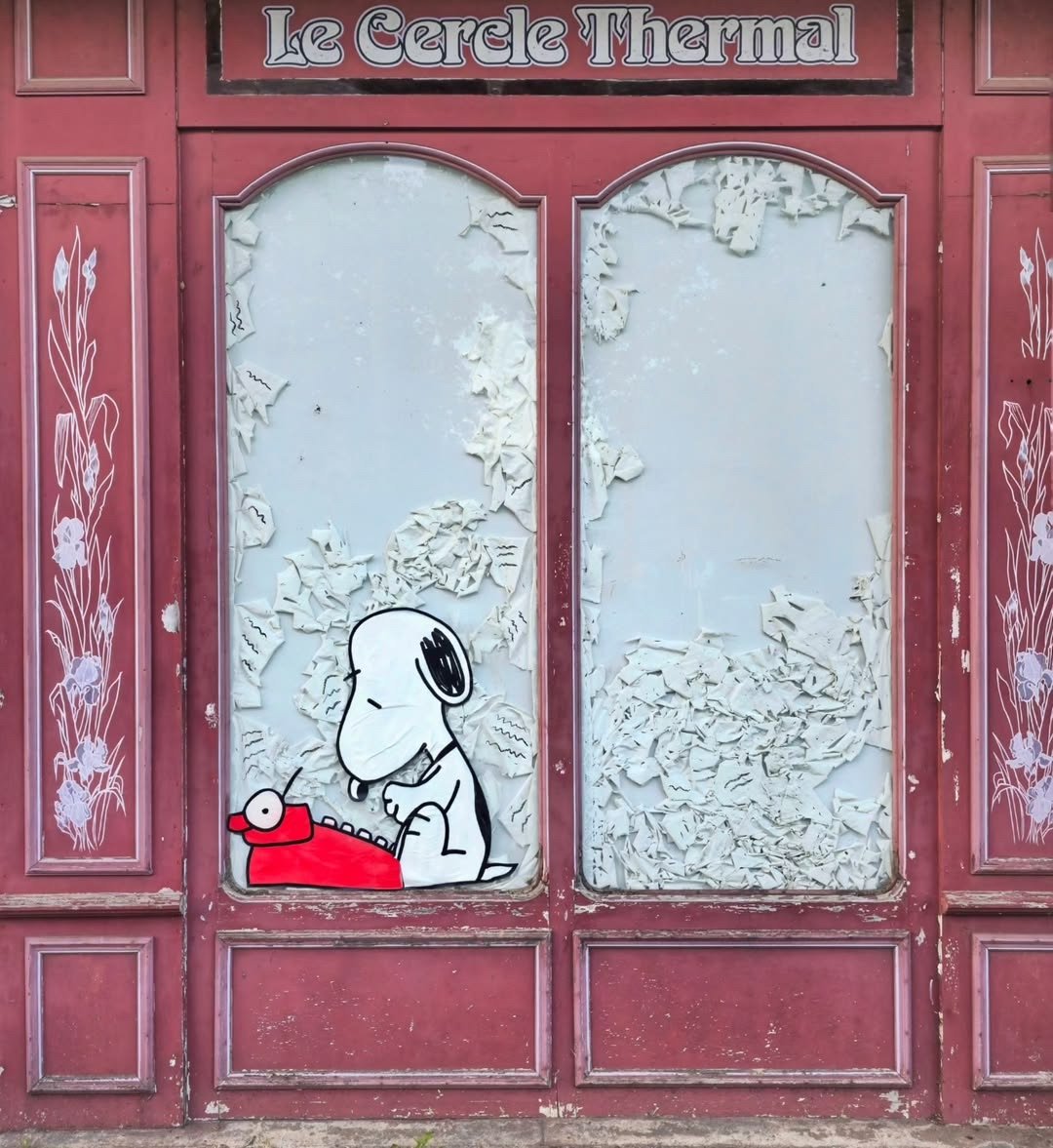
And ha, I just noticed this one, a riff on Hokusai’s The Great Wave.
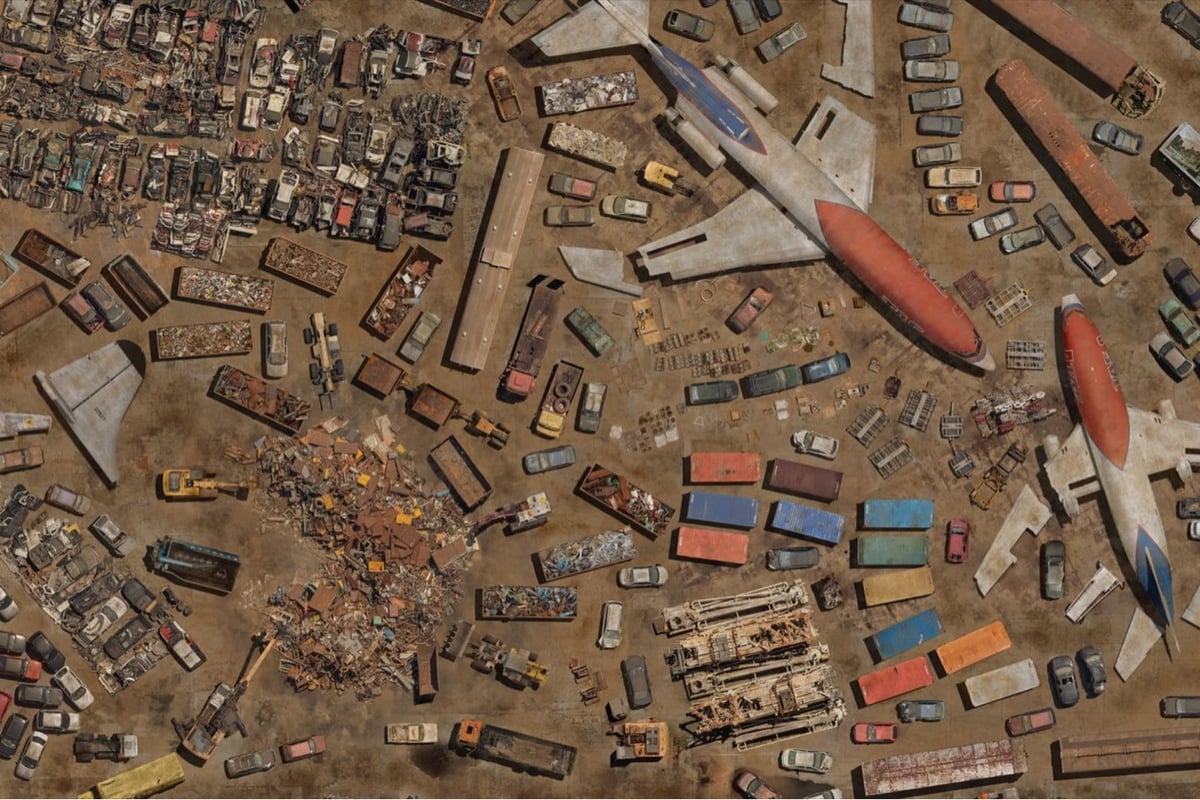

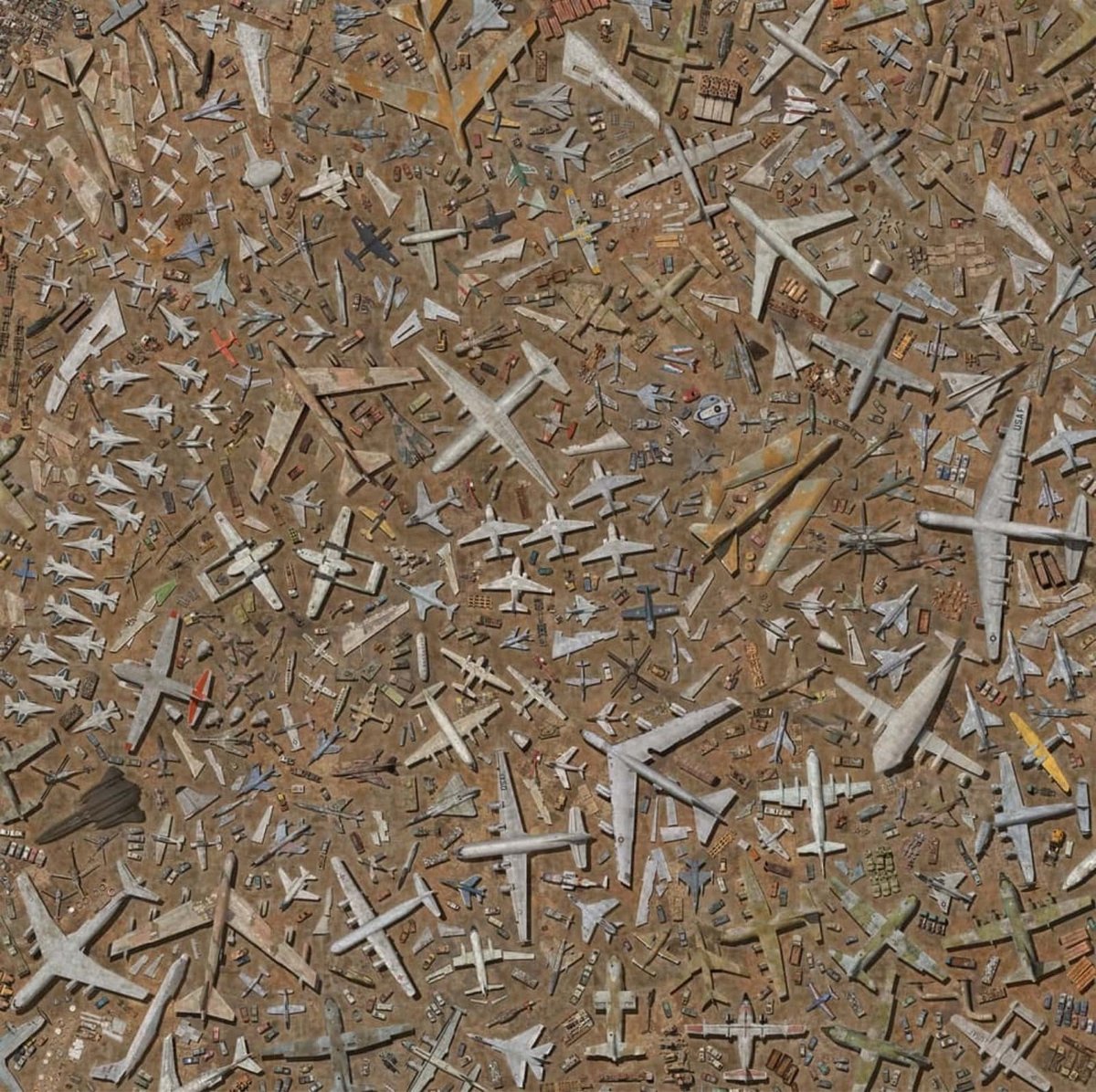
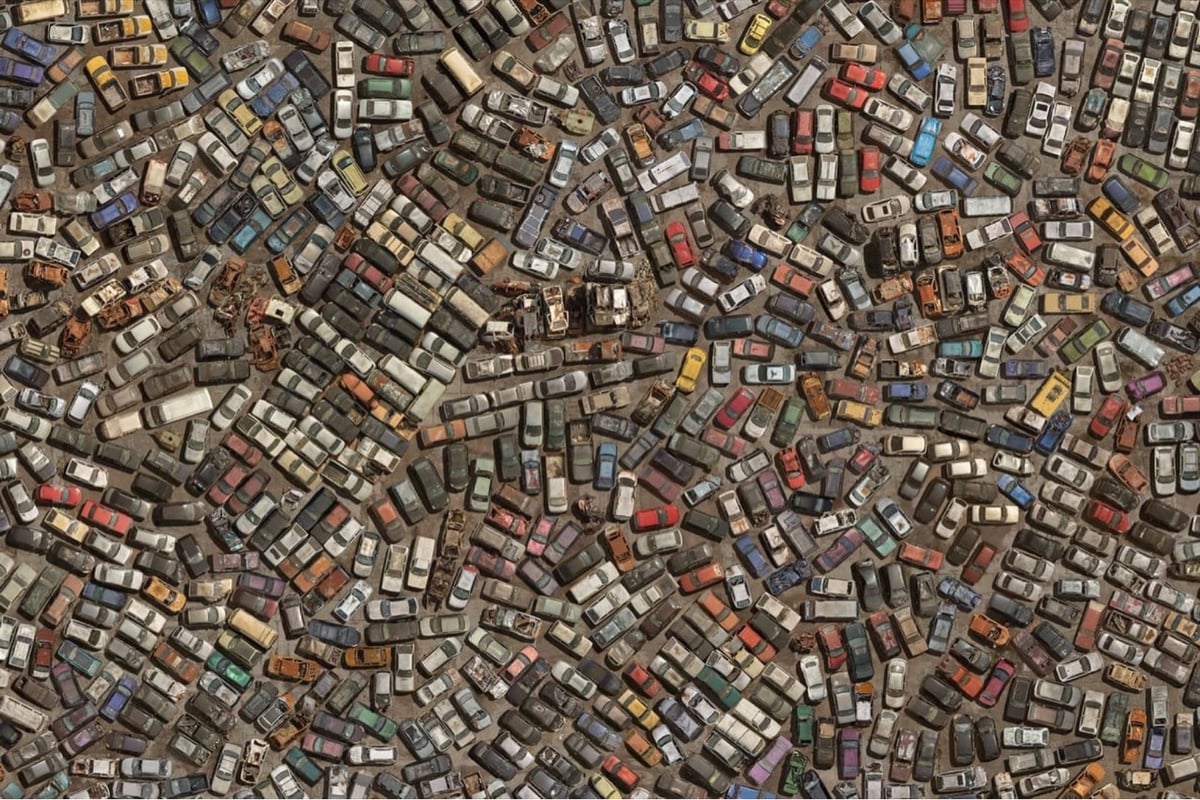
In a continuation and tweak of his Coletivos project (which I posted about previously), Cássio Vasconcellos took aerial photos of scrapyards and arranged the junked cars, planes, trains, and other objects into dense photographic collages.
OVER presents a scenario that seems to point to a dystopian future, but which, in fact, brings together fragments of the present. The exaggerated agglomeration denounces the misleading idea of “disposal”, given that objects do not cease to exist in the world when we throw them away. Rather, they inhabit other places.
This video shows the artist’s process, from hanging out the side of a helicopter to arranging all the items in Photoshop.

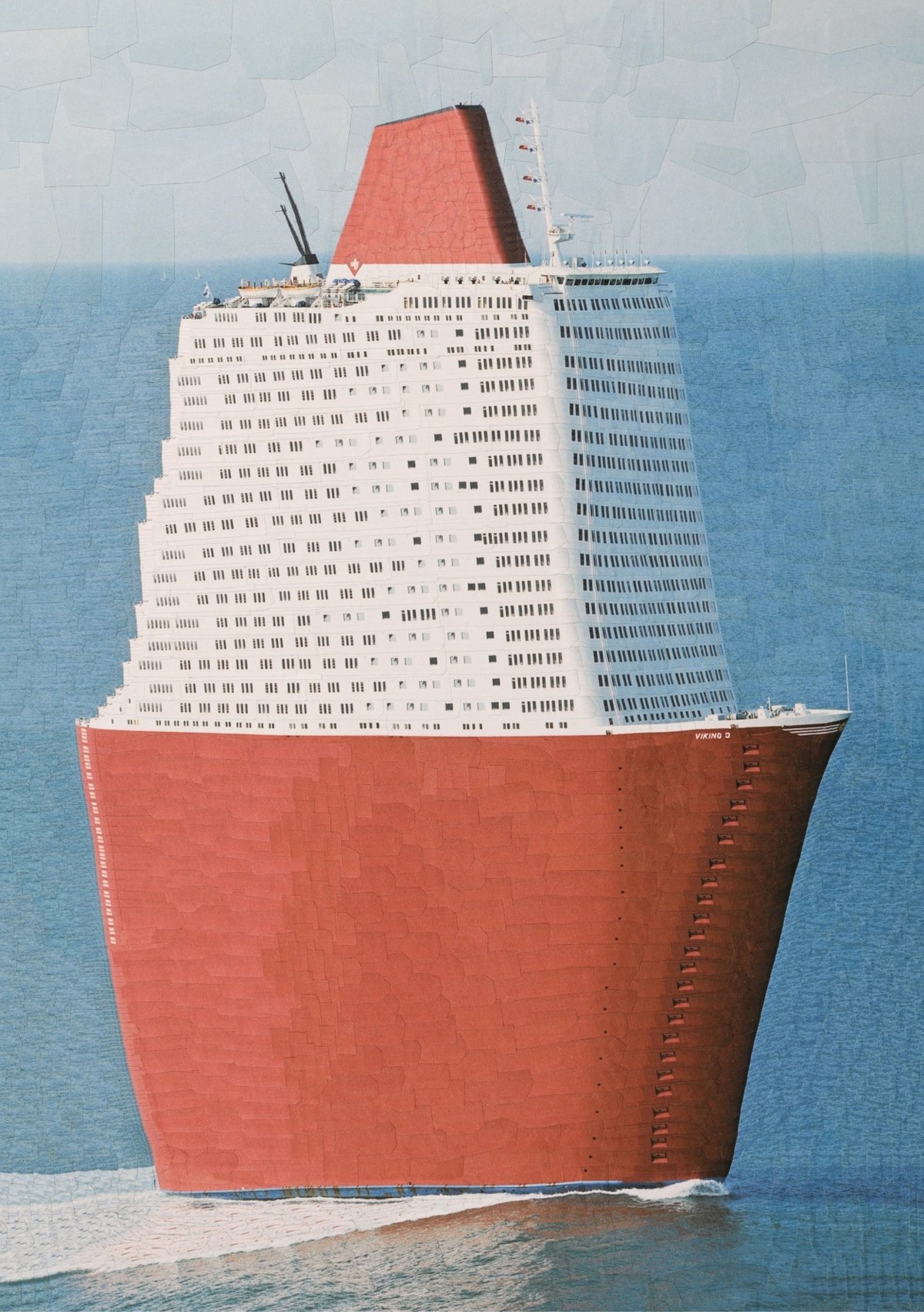


Collage artist Lola Dupré makes these wonderfully weird images of exaggerated objects, animals, and people. You find more of Dupré’s work on her website and on Instagram. (via colossal)
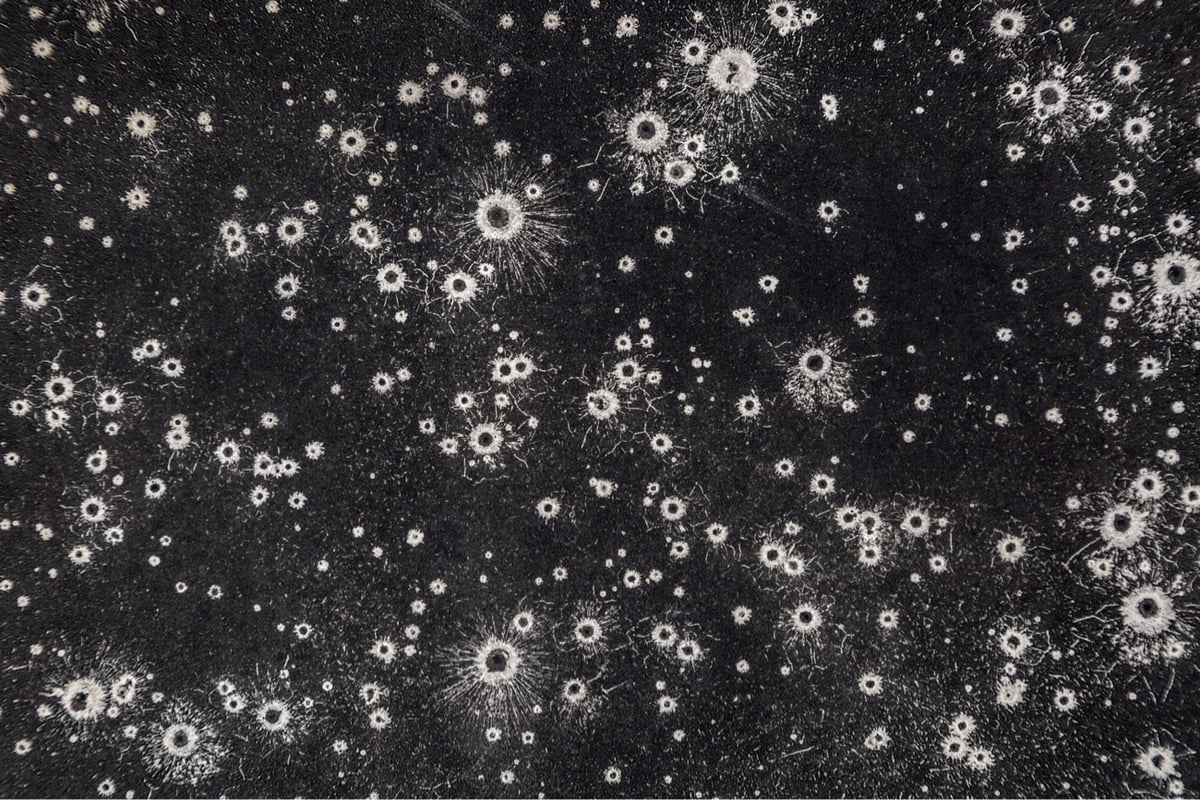
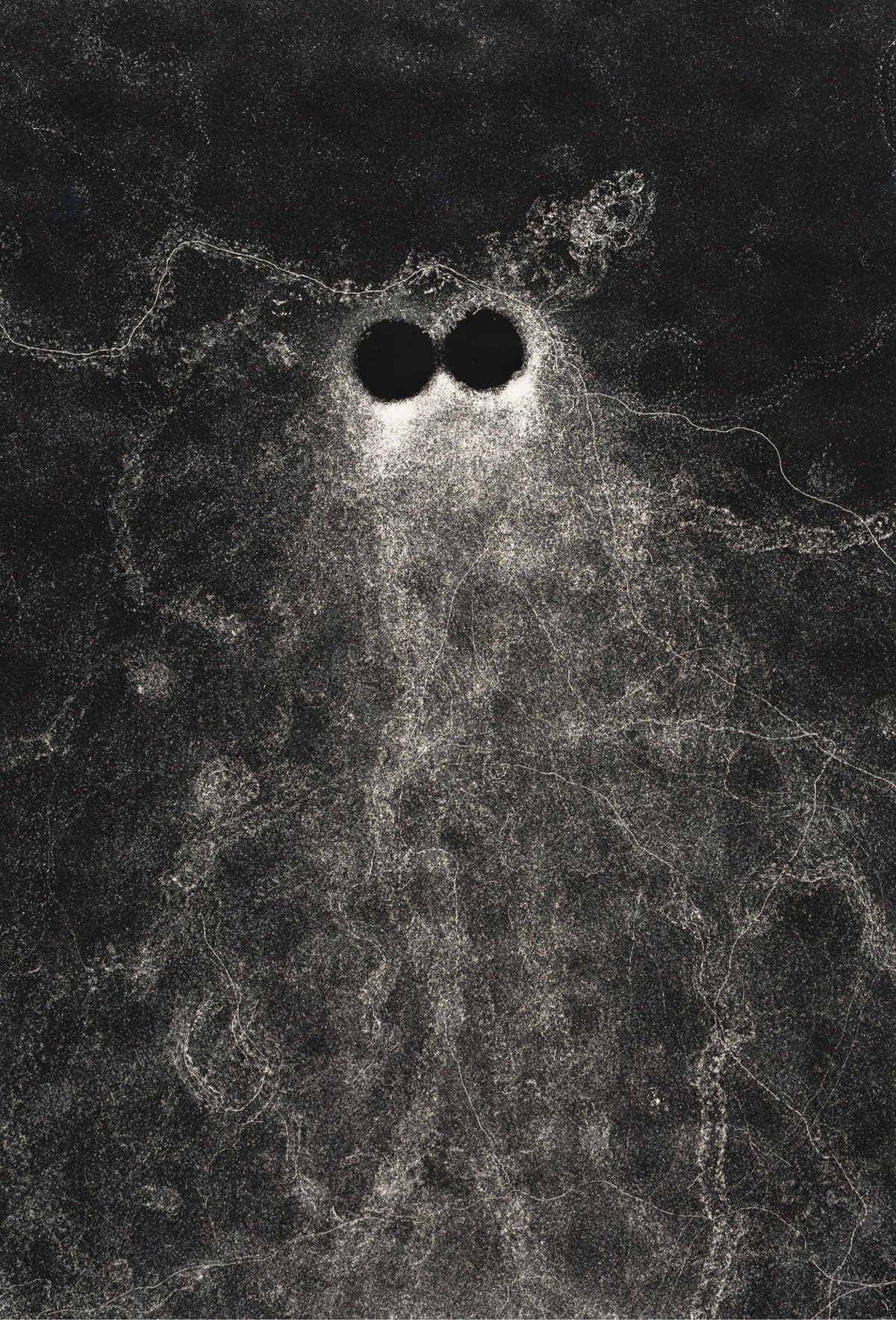
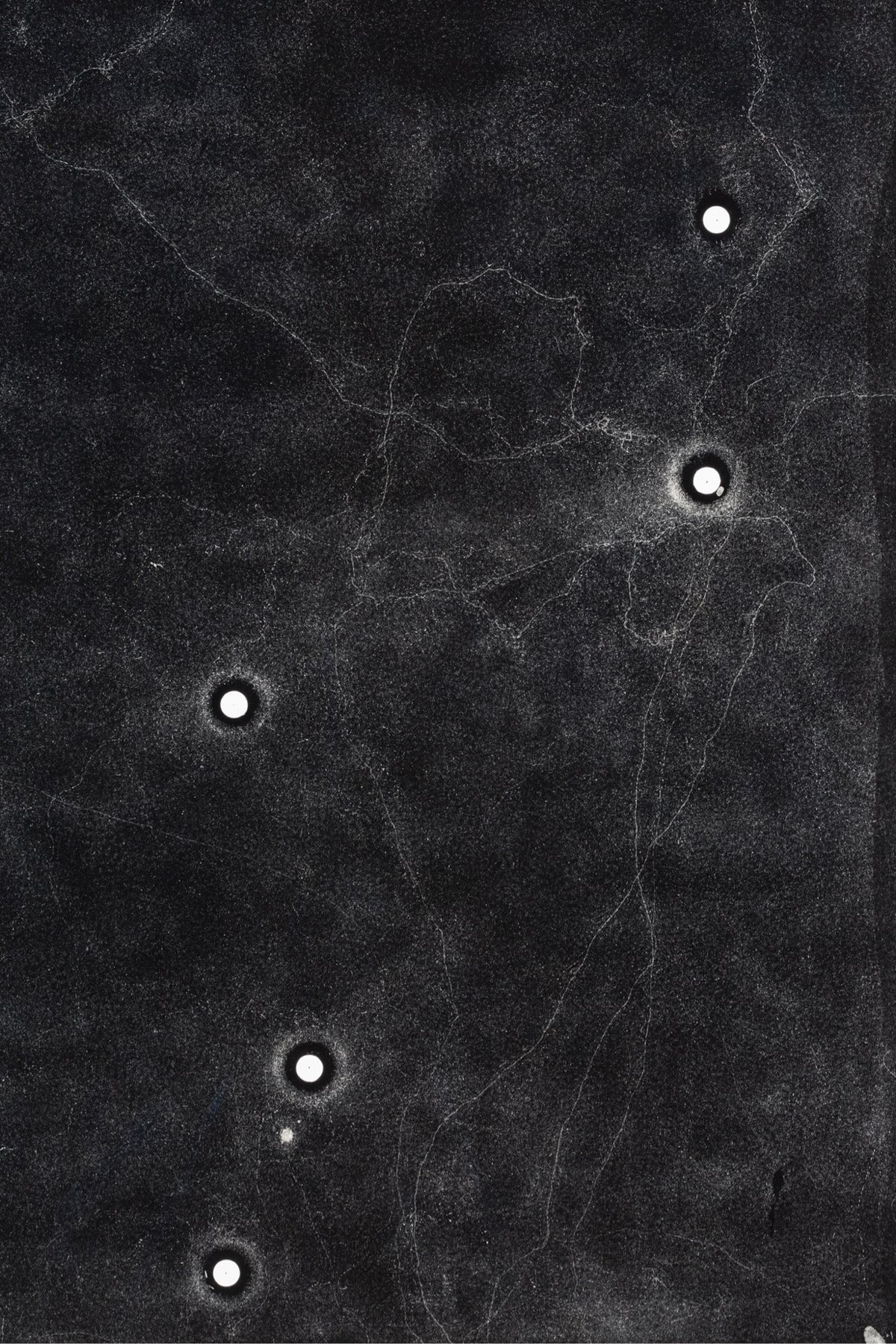
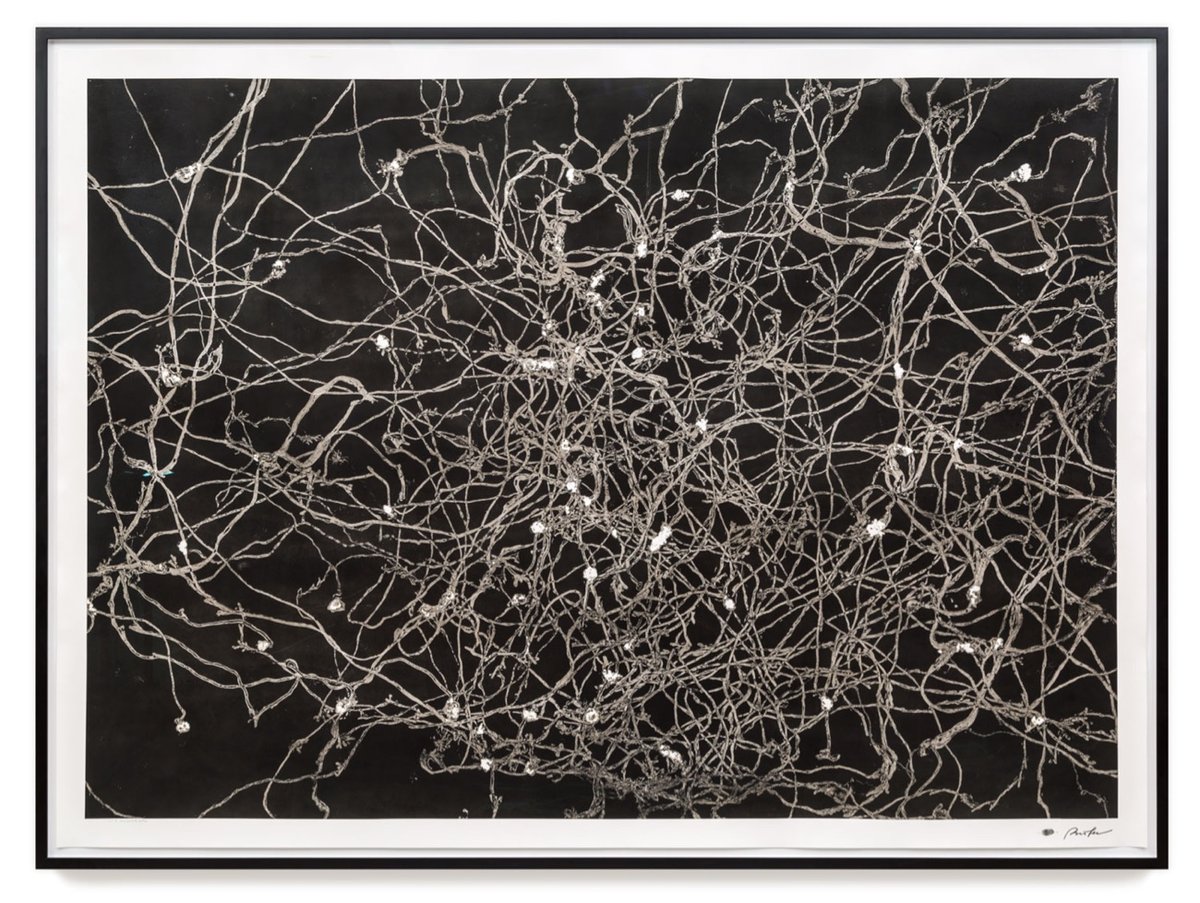
Maximilian Prüfer makes art in collaboration with nature and animals like ants & snails. Using paper with a very sensitive coating on it, he’s able to record the slightest moments of activity, like a raindrop or an ant’s footstep. Here’s a video of some ants leaving their marks:
And some rain drops:
You can find more of Prüfer’s work on his website and on Instagram.
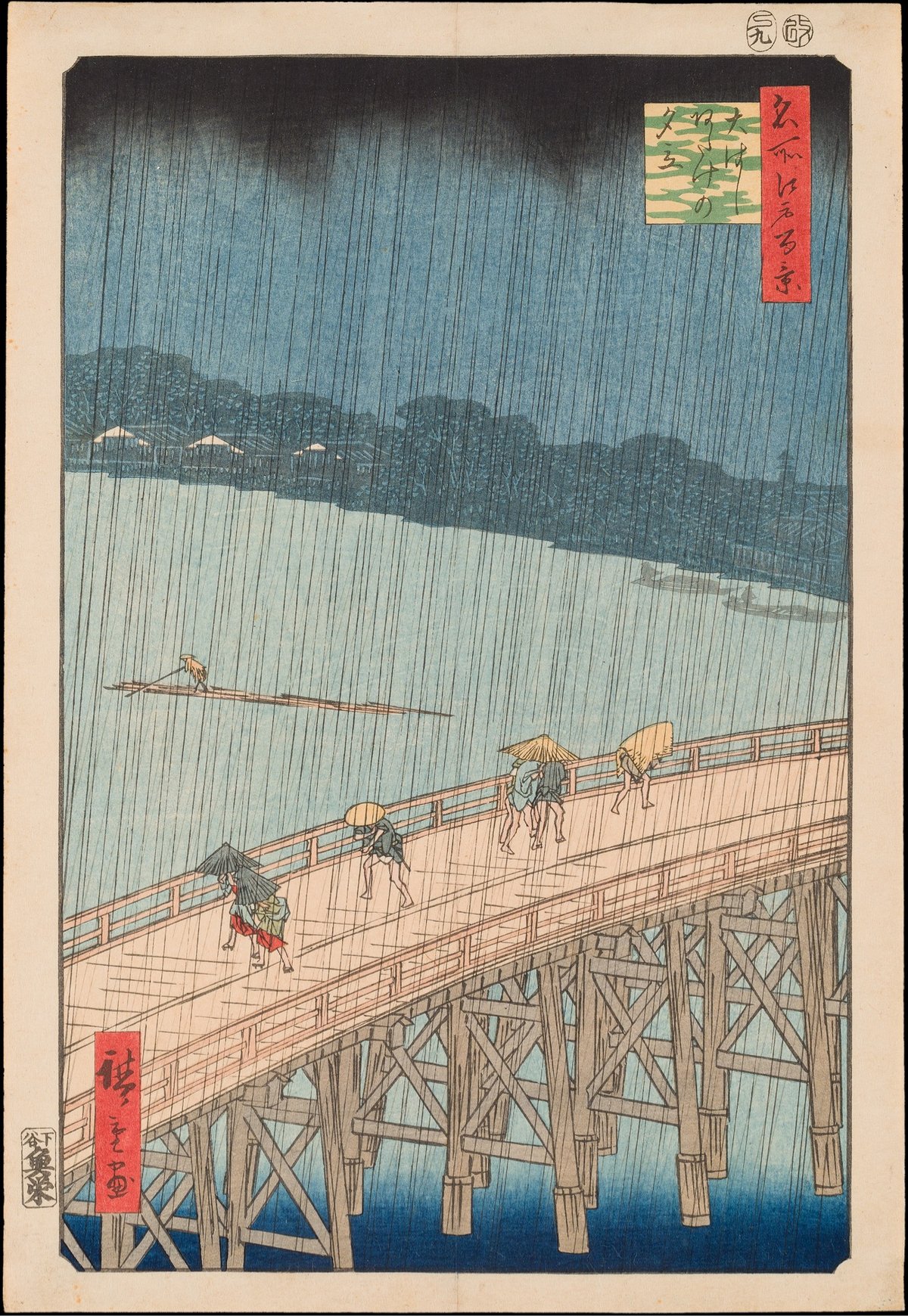
The NY Times has been doing these challenges every Friday where you sit and look at one piece of art for 10 minutes. Last week featured a woodblock print by Utagawa Hiroshige called Great Bridge: Sudden Rain at Atake, a piece that Vincent van Gogh had in his personal collection and painted a version of himself.
I didn’t expect to last the entire 10 minutes — a slow start to the day (dentist, errands) had me feeling rushed and a computer with an infinite number of apps & websites just a tab or click away is not the ideal medium for this exercise — but once I got going (or, rather, once I slowed down), it was pretty easy. (via laura olin)
It’s been awhile since I’d checked in on one of my favorite YouTube channels, Great Art Explained. In the past year, curator James Payne has done videos on Duchamp, Manet, Magritte, and that one painting by Caspar David Friedrich (you know the one). But this one, on Vincent van Gogh’s final painting, particularly caught my attention:
The mystery of what [his final painting] was and where it was painted would take over a century to solve, and that was only thanks to a worldwide epidemic. What it means is that we now have a deeper insight into what van Gogh’s final last hours were like — before his tragic death.
“Barbaric.” A “nightmare of vulgarity.” “Monstrous.” “A violent mess.” “The work of a madman.” Those are just some of the reactions that Henri Matisse’s Dance received after its public debut in 1910. In this video, Evan Puschak shares How Matisse Revolutionized Color In Art with this painting and other Fauvist work.
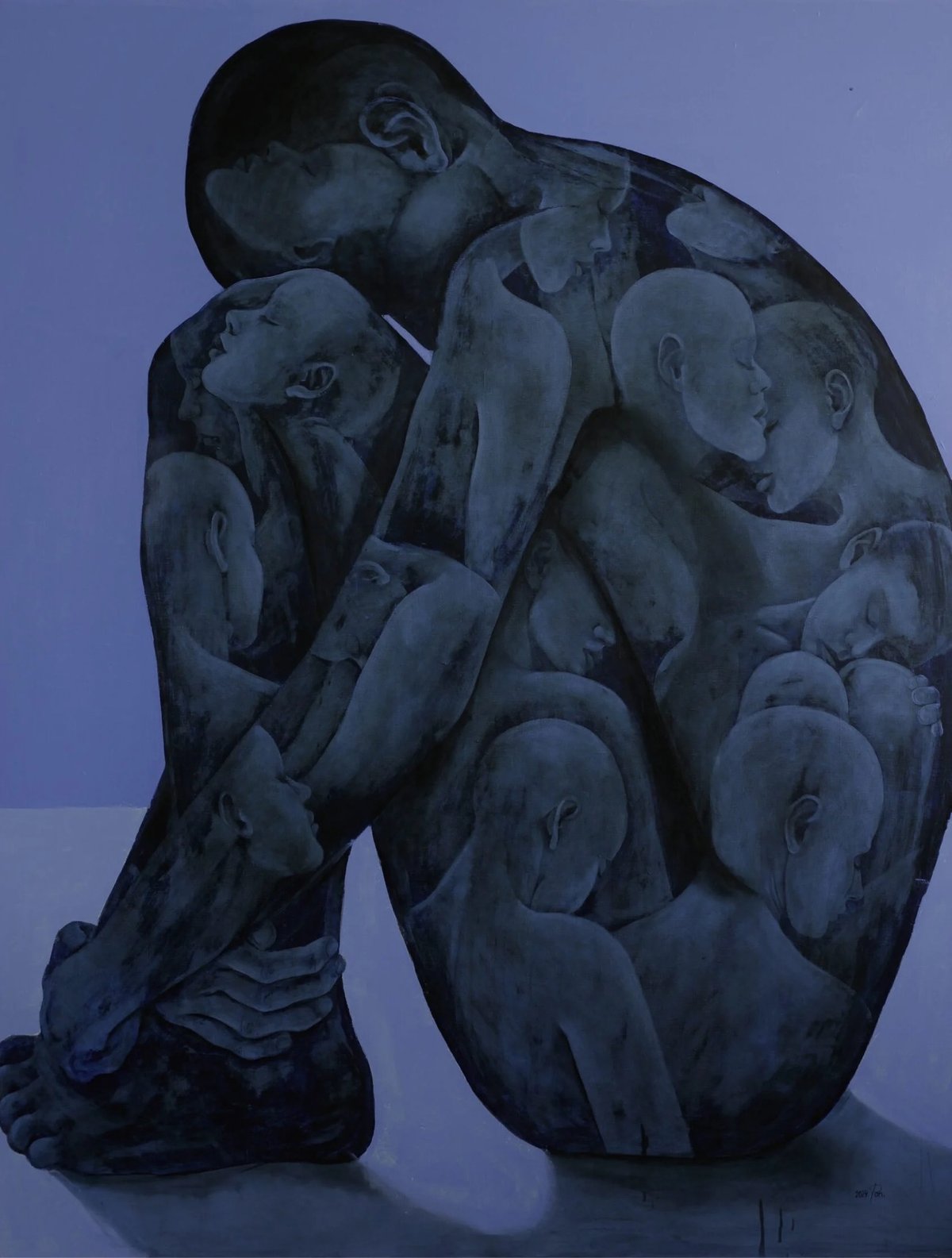
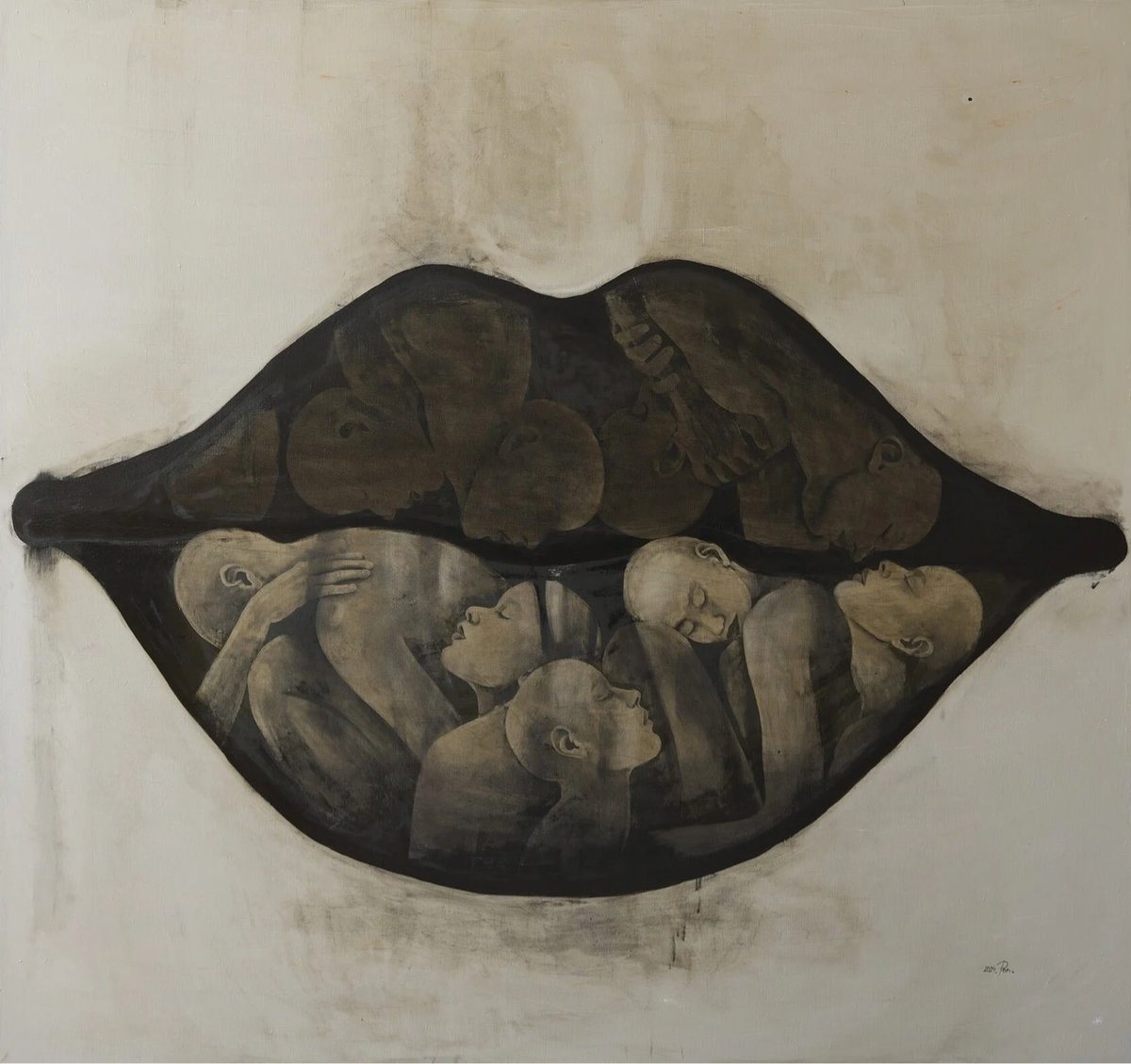
I quite like these layered oil paintings by Moldovan artist Pon Arsher. You can find her latest work, as well as several behind-the-scenes videos, on Instagram.
Stay Connected